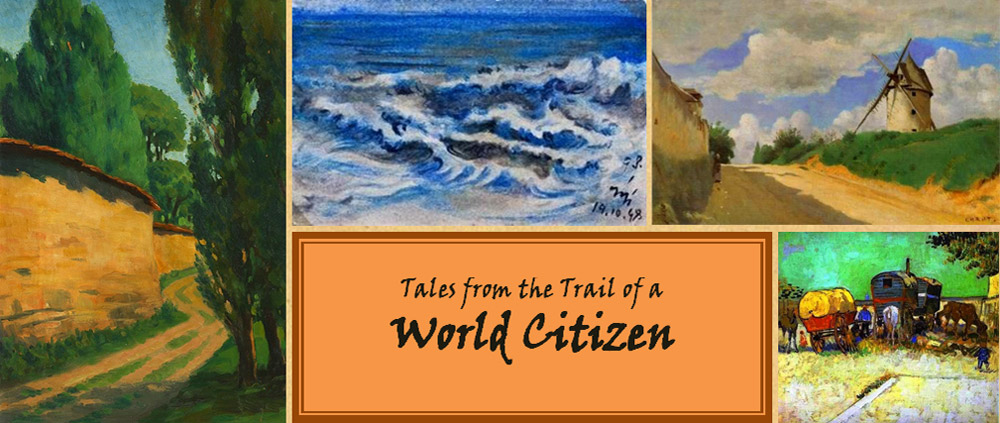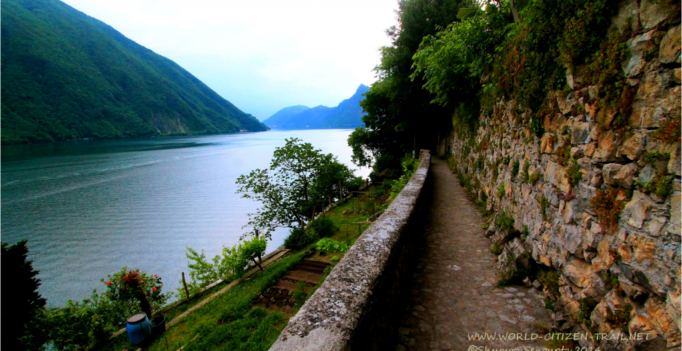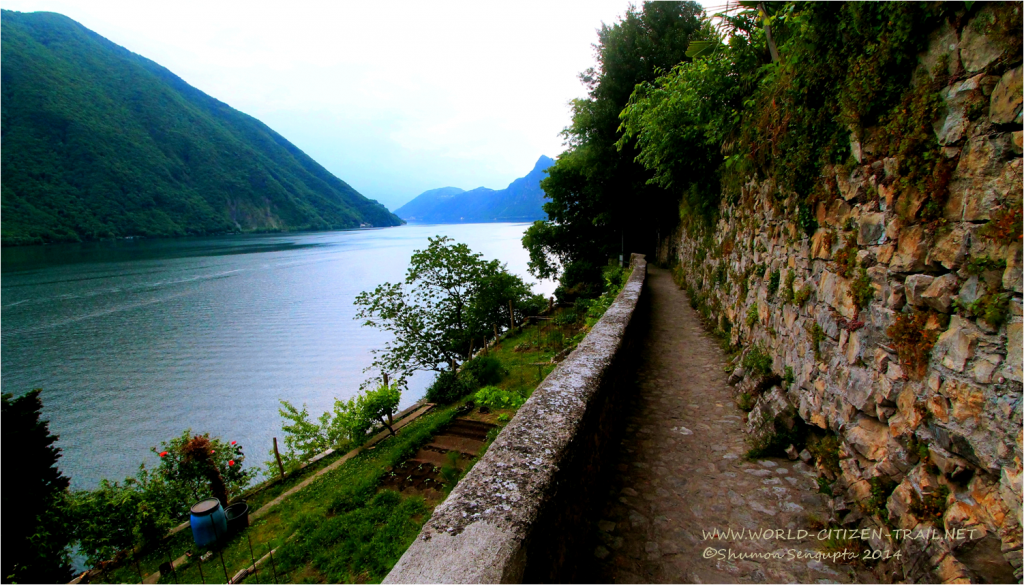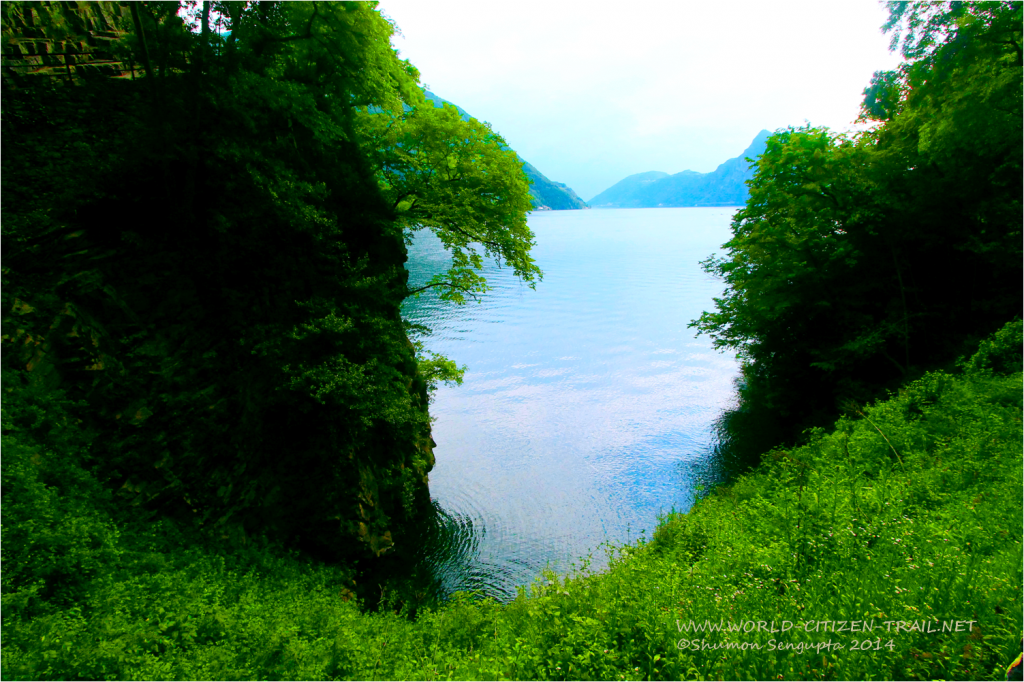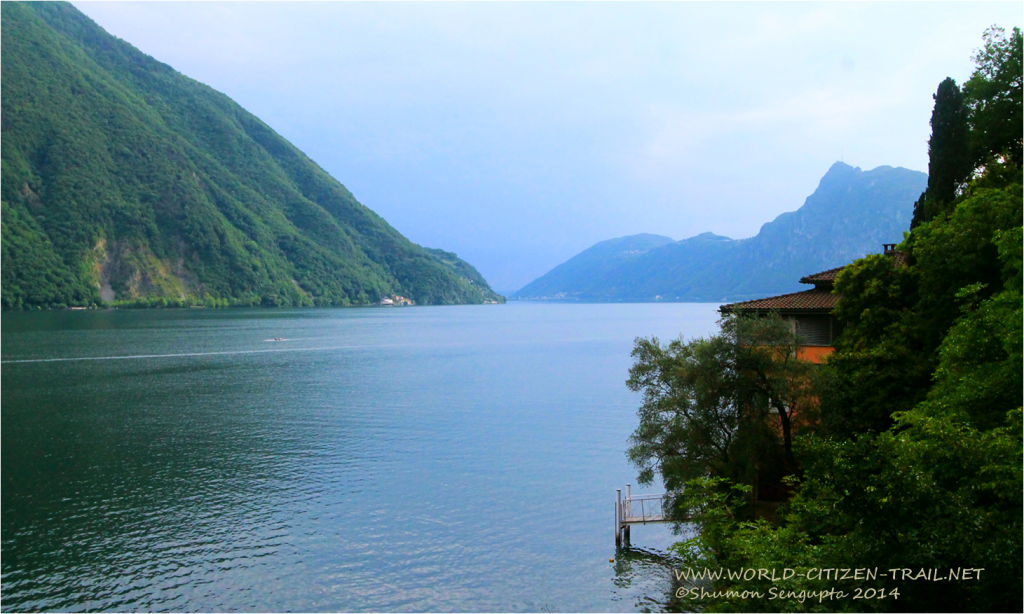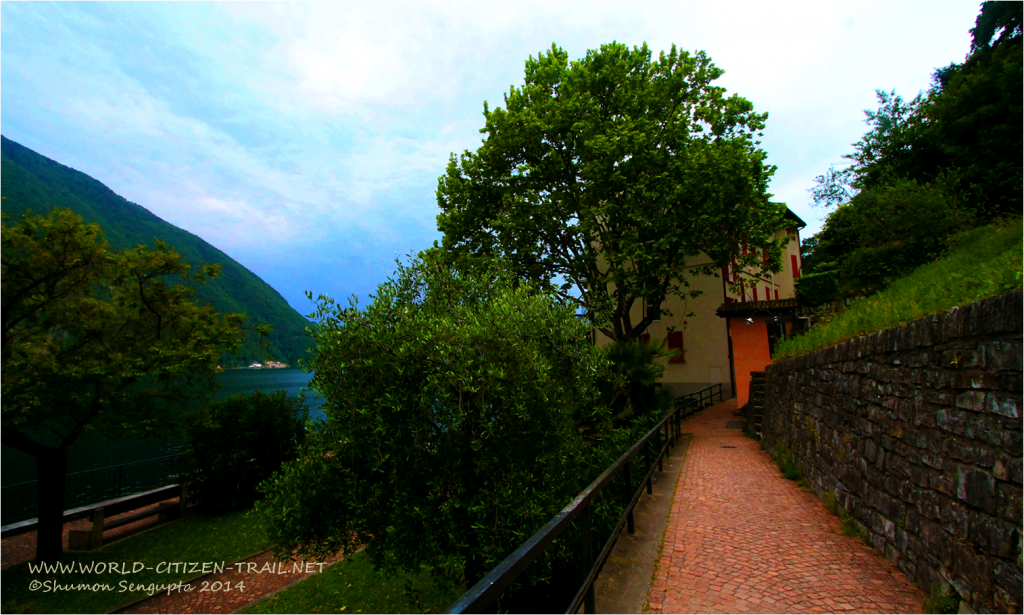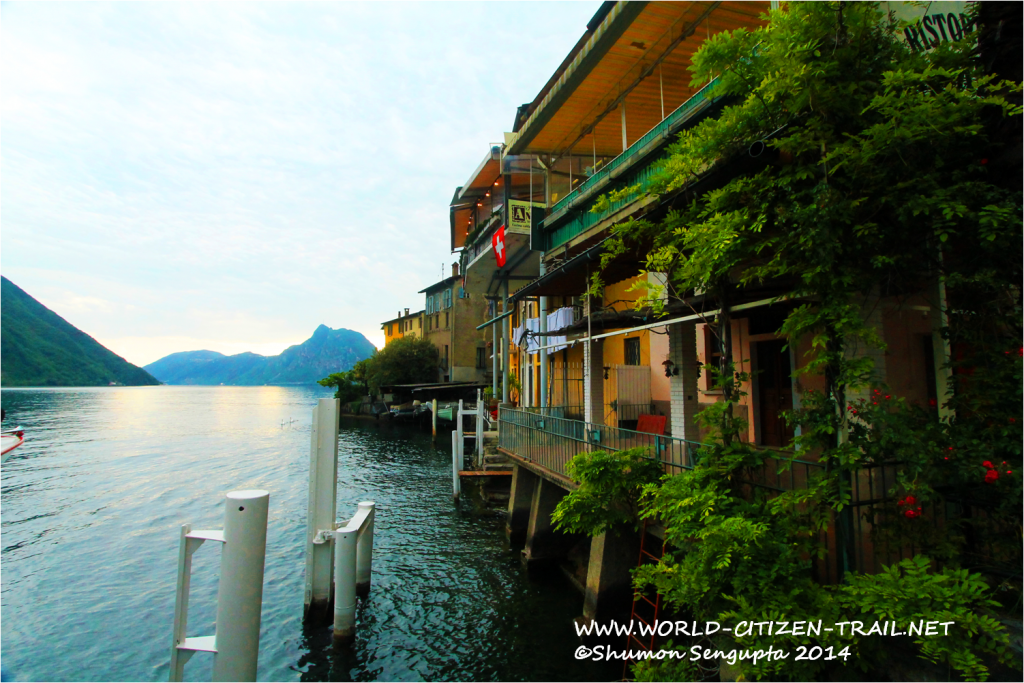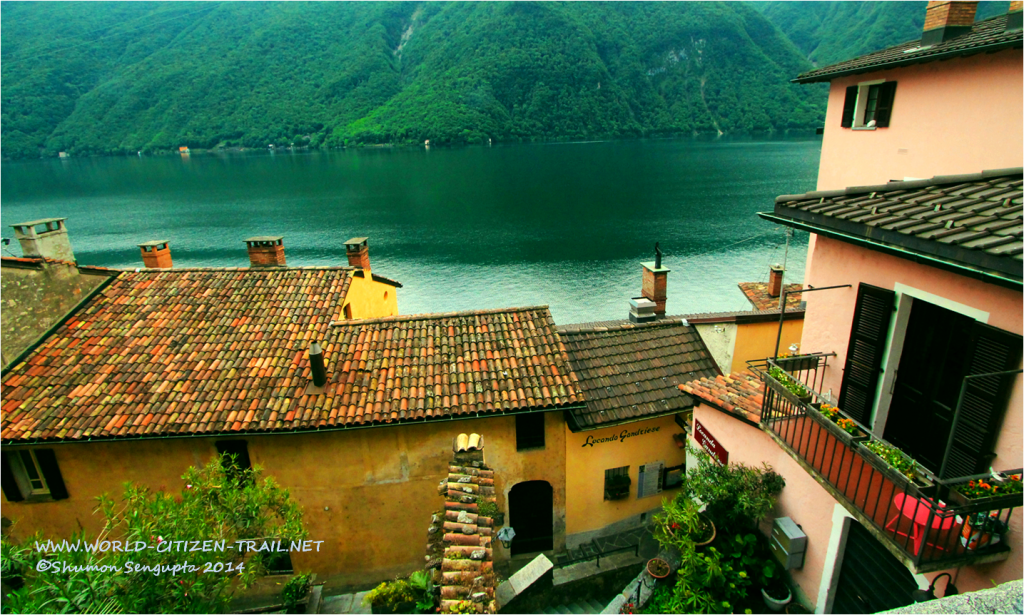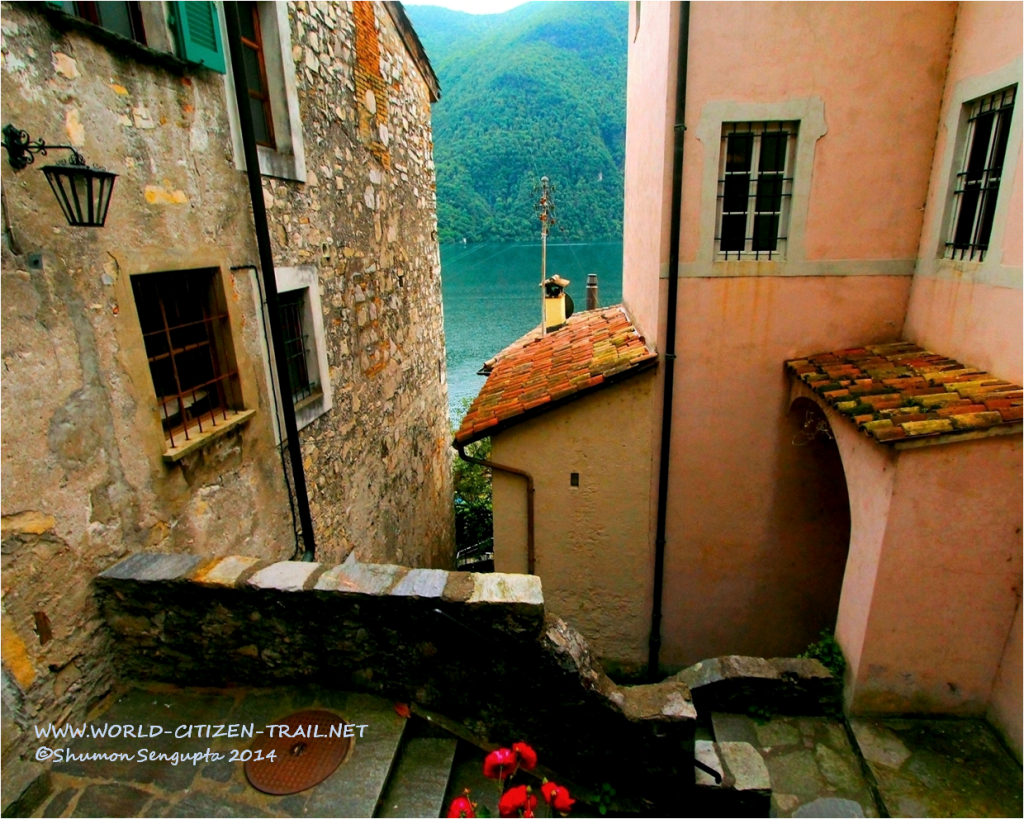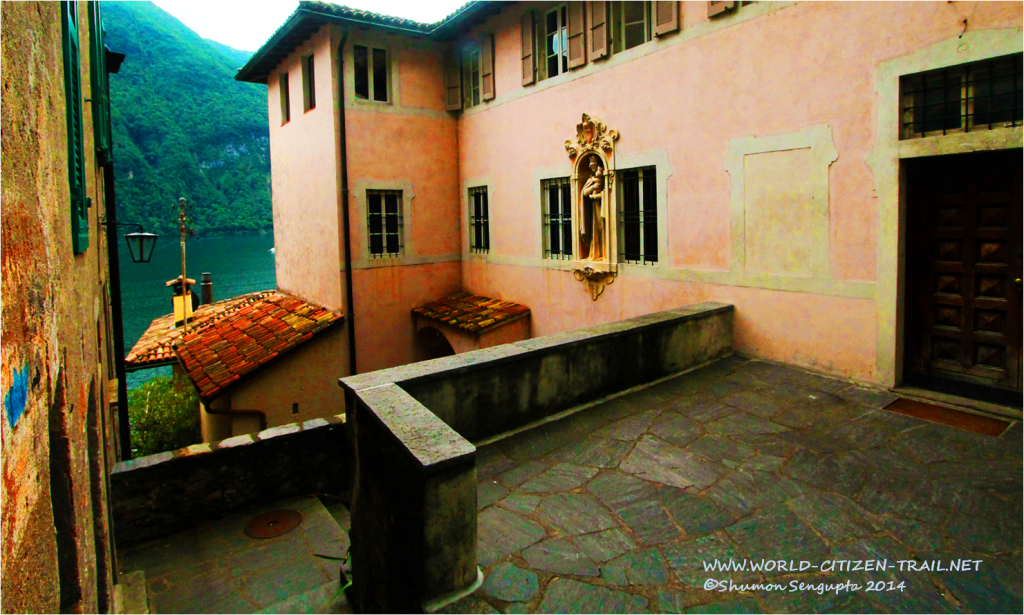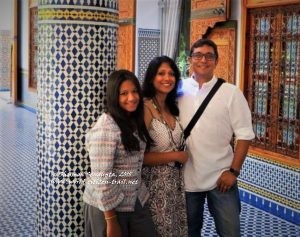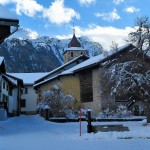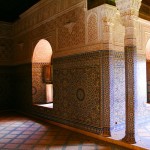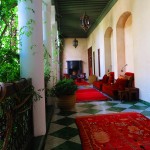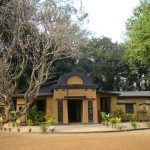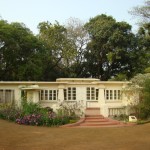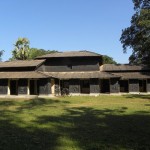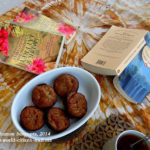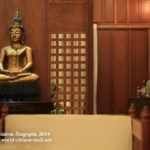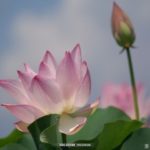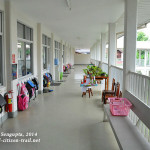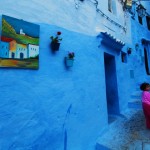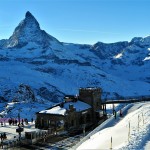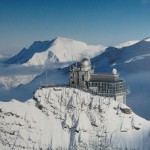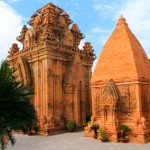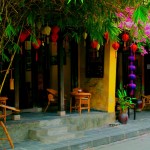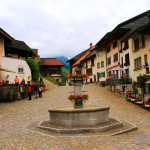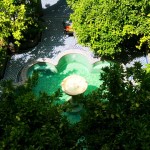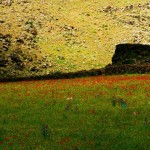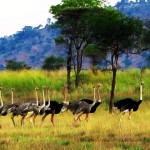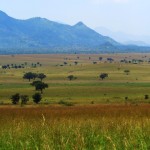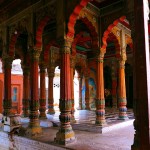In my previous post, I had described about our visit to the erstwhile fishing village or Gandria, a picture postcard location at the foot of Mount Brè, by Lake Lugano. In this post, I shall describe our hike between Gandria and Castagnola along the incredibly picturesque Olive Trail (Sentiero dell’Olivo or formally Sentiero Di Gandria). I was on a long trip to Switzerland with my wife, Nina and our eleven year old daughter, Minnie.
Generally one wouldn’t associate olive oil and olive groves with Alpine Switzerland. However Lugano (in the canton of Ticino) borders Italy and the linguistic, architectural, cultural and culinary influence of Italy is very pronounced here; the climate is mild and sunny, quite akin to that of the Mediterranean and hence ideal for the cultivation of olives.
The cultivation of olives in this region dates back to ancient times and till the early 18th century, Ticino – Gandria in particular – was known for its olive groves and olive oil. However things changed in 1709 when a severe winter destroyed all but a few olive trees in this region. And with that, the olive growing tradition of Gandria died out.
In a bid to revive the ancient and long lost olive growing tradition in this region, in the last decade, new olive groves have been planted in this area by an organization called Amici dell’Olivo (Friends of the Olive Tree). It was a bid to reclaim history if you like. Since 2003 the number of olive trees has increased gradually and according to reports, by the end of 2012, there were approximately 3,000 olive trees in Ticino and Gandria’s harvest alone produce 46 liters of oil every year.
As a part of this revival, the idea of the Olive trail (along with its Olive Park) was conceived by the “Friends of the Olive Tree” association in collaboration with the Fund for Naturalistic and Archeological Sites in Gandria. The total trail, 7 kms long has 18 information boards which describe in words and graphics the history and science of the olive tree cultivation, olive oil extraction, its use and botanical details behind the olive tree. The stretch between Gandria and Castagnola, the one we covered, is about 4 km. A large part of the route is a narrow path hewn into the steep mountainside of Mount Brè, shadowing the shore line of Lake Lugano. In this trail, few wild olive trees and remains of ancient olive groves are still visible.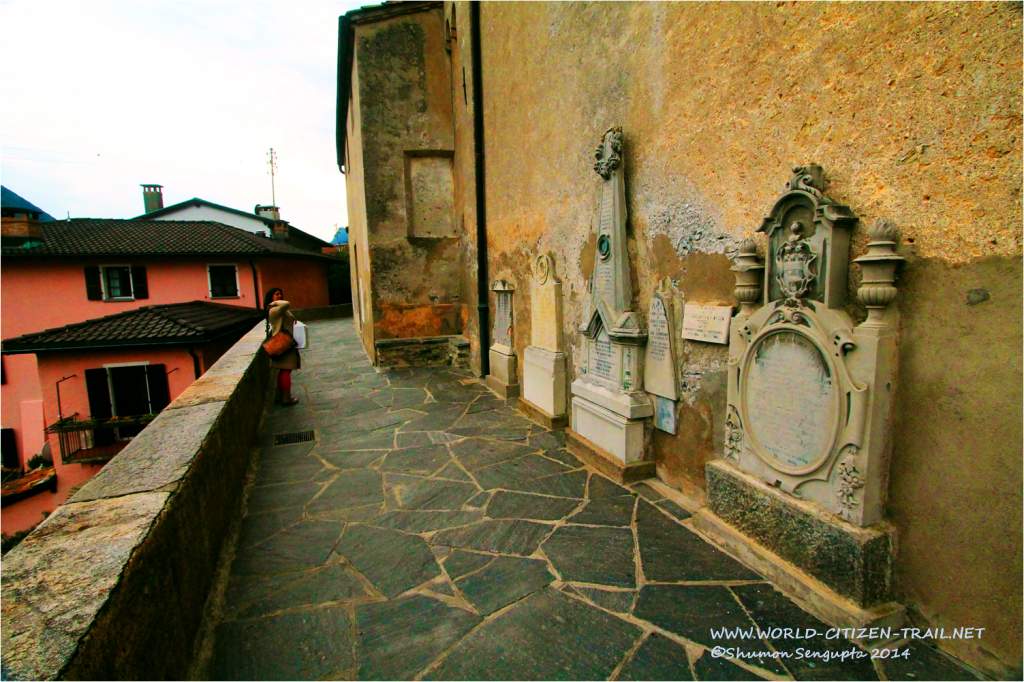
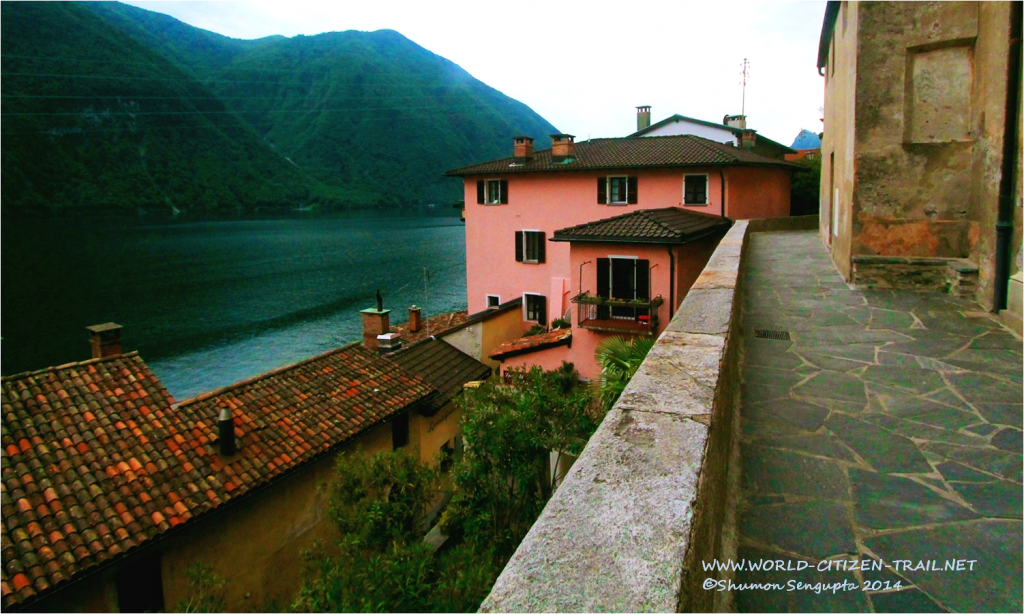
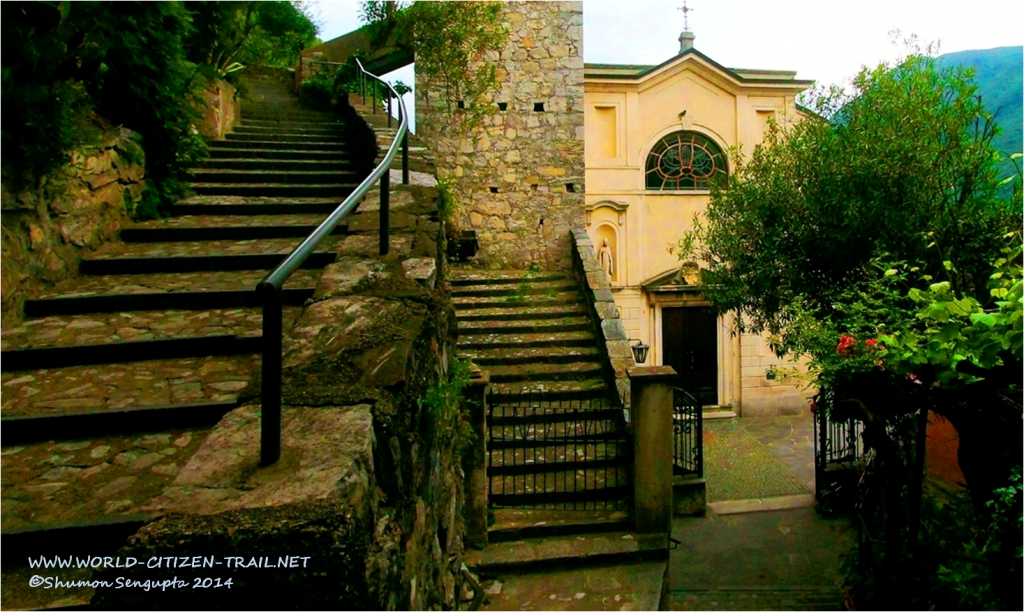 From the plaza (or Piazza in Italian) in Gandria, we followed the green olive signs, past the church of St. St. Virgilio along the curved terrace and then through a long, narrow flight of stairs, on to a graveled path that eventually led us into the olive trail.
From the plaza (or Piazza in Italian) in Gandria, we followed the green olive signs, past the church of St. St. Virgilio along the curved terrace and then through a long, narrow flight of stairs, on to a graveled path that eventually led us into the olive trail.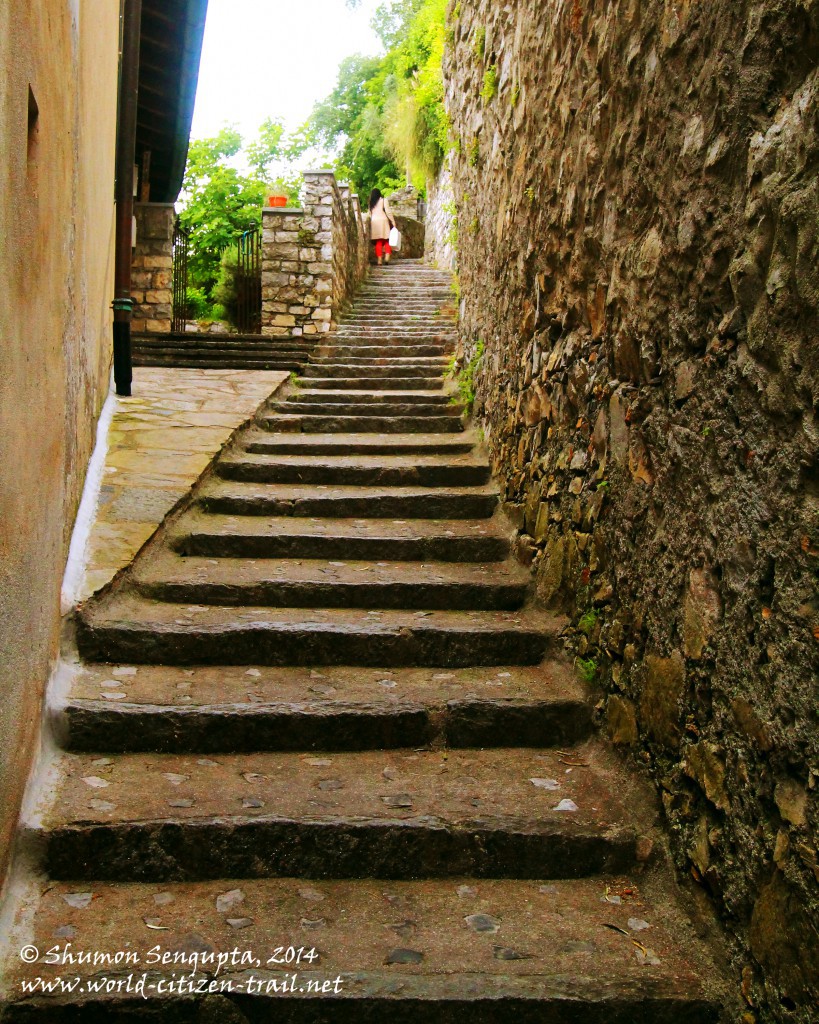
After we left Gandria behind us and walked for a few minutes, at the end of the narrow path, we took a sharp curve to the right along the steep edge of the mountainside and this led us to a flight of sweeping and descending steps. This point – referred to by some as ‘Sasso di Gandria’ is a highlight of the trail, with a spectacular view of the lake and the mountains. At this point you can see sheer granite rock faces that look rugged and imposing. A little ahead, at the end of the steps, you walk under a long colonnade by the cliff side cut into the forested the mountain face.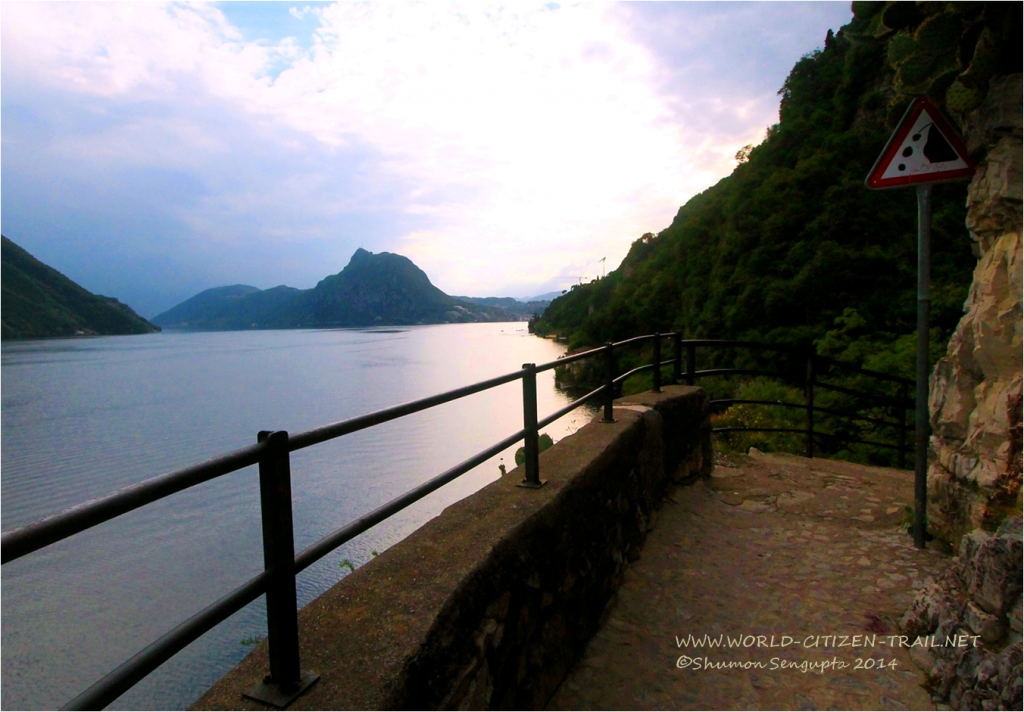
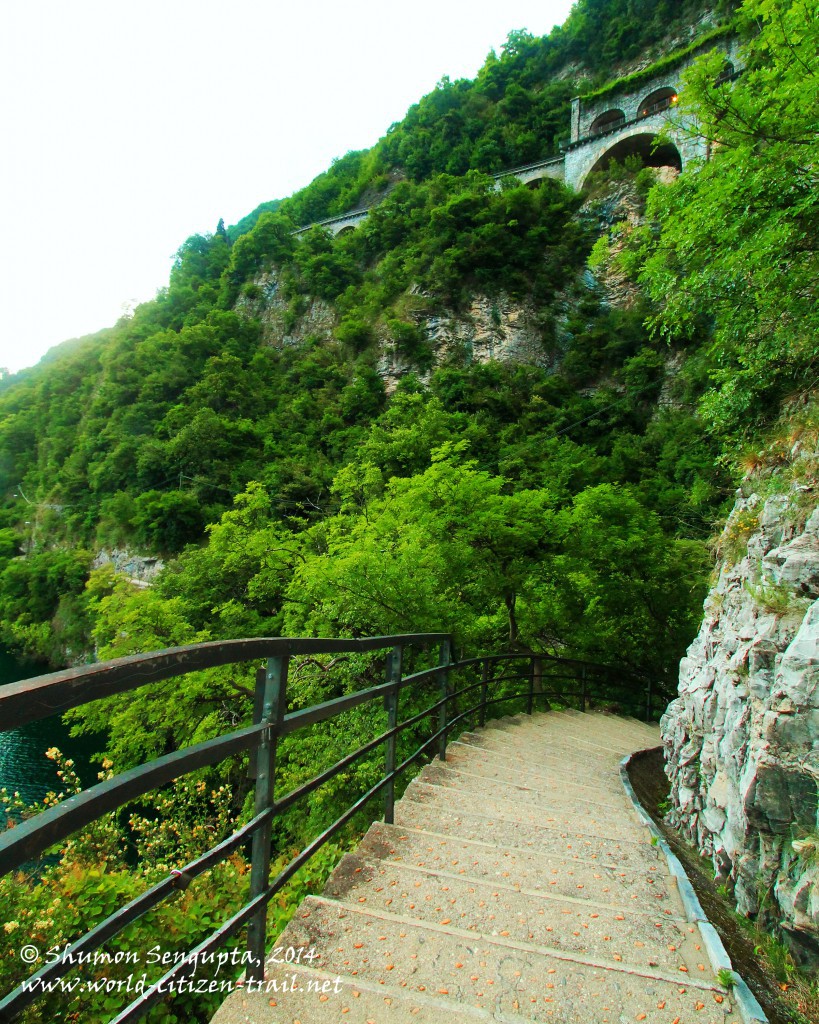
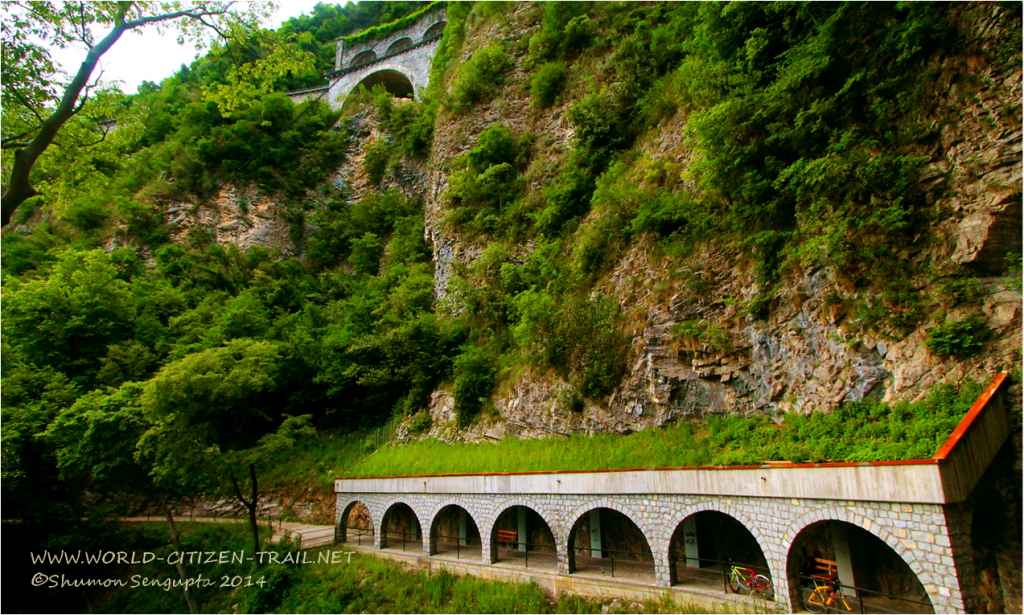
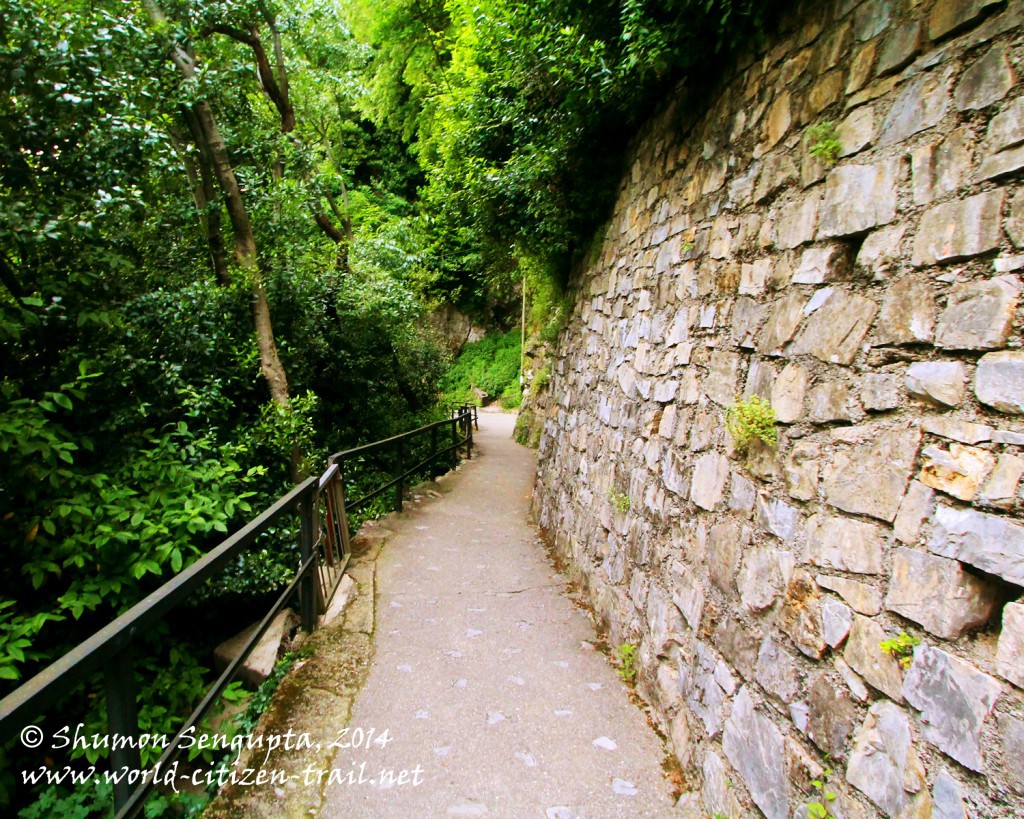 After ‘Sasso di Gandria’, the first landmark you pass along the trail is hotel Elvezia el Lago and its beautiful restaurant located across the path, overlooking the Lake. This is an incredibly romantic location to have an early dinner. After this, having covered 2/3rd of the trail, the way broadens at Cortivo into a proper tarmac road, where the olive trail, formally known as Sentiero Di Gandria, takes the name Via Cortivo. There a beautiful little stone fountain at the parking area in this place
After ‘Sasso di Gandria’, the first landmark you pass along the trail is hotel Elvezia el Lago and its beautiful restaurant located across the path, overlooking the Lake. This is an incredibly romantic location to have an early dinner. After this, having covered 2/3rd of the trail, the way broadens at Cortivo into a proper tarmac road, where the olive trail, formally known as Sentiero Di Gandria, takes the name Via Cortivo. There a beautiful little stone fountain at the parking area in this place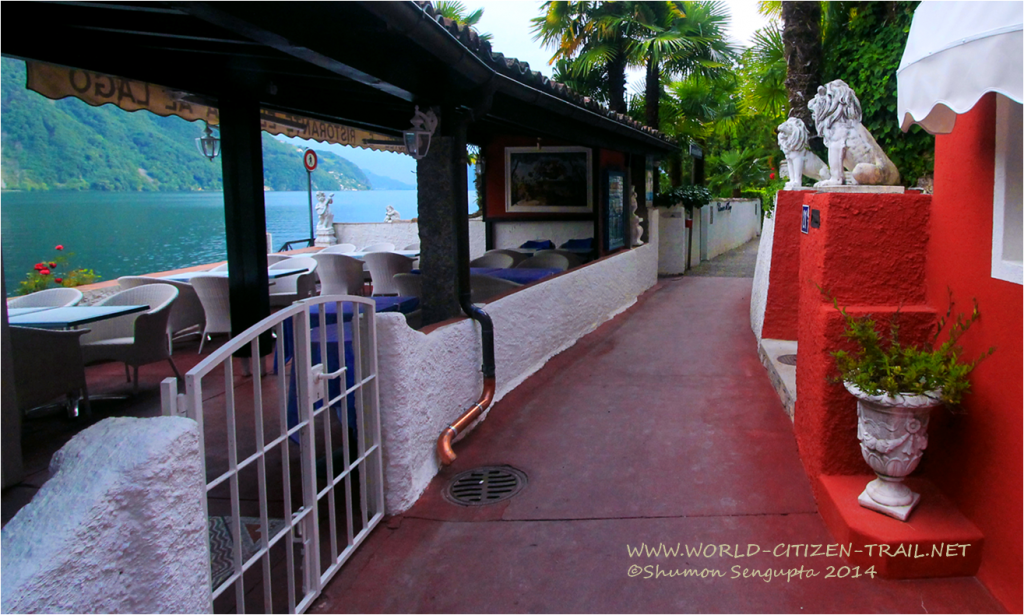
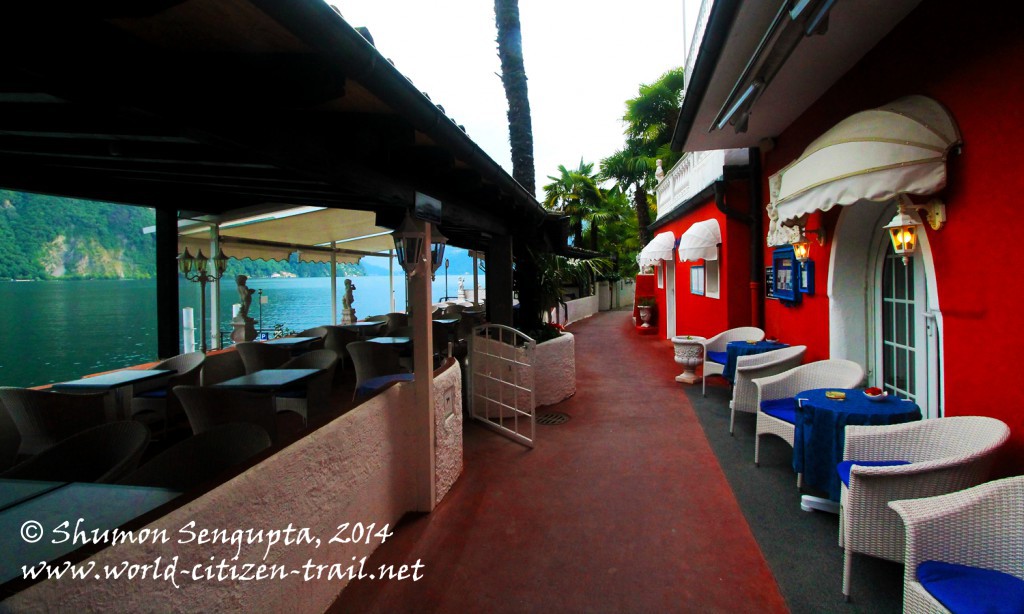 Cortivo is a lovely and lively area which has an access to a secluded part of Lake Lugano where you can relax or take a swim if you are adventurous enough and if it is not too cold. Around Cortivo and elsewhere, we passed by beautiful houses, whose walls were draped in climbers and flowering shrubs, in some places the flowering shrubs rooted in the crevices in the stones that made up the walls. Spring flowers had begun to appear and we found geraniums cascading in thick abundance from balconies, deep purple wisterias, oleanders, pink and purple azaleas, cypresses and palm trees along the way.
Cortivo is a lovely and lively area which has an access to a secluded part of Lake Lugano where you can relax or take a swim if you are adventurous enough and if it is not too cold. Around Cortivo and elsewhere, we passed by beautiful houses, whose walls were draped in climbers and flowering shrubs, in some places the flowering shrubs rooted in the crevices in the stones that made up the walls. Spring flowers had begun to appear and we found geraniums cascading in thick abundance from balconies, deep purple wisterias, oleanders, pink and purple azaleas, cypresses and palm trees along the way.
From there we passed by the Museo delle Culture housed in the sprawling neo classical mansion called the Heleneum. The museum is surrounded by a park – a splendid botanical garden. Unfortunately, by the time we reached the museum, it was closed. I have read that museum has on display a large collection of ethnic art works that was collected by Serge Brignoni from South, South East Asia (Indochina) and the Hawaiian archipelago, between 1930 and 1985. The park, located on the shore of the lake has Mediterranean, tropical and subtropical plants not found in other parts of Switzerland.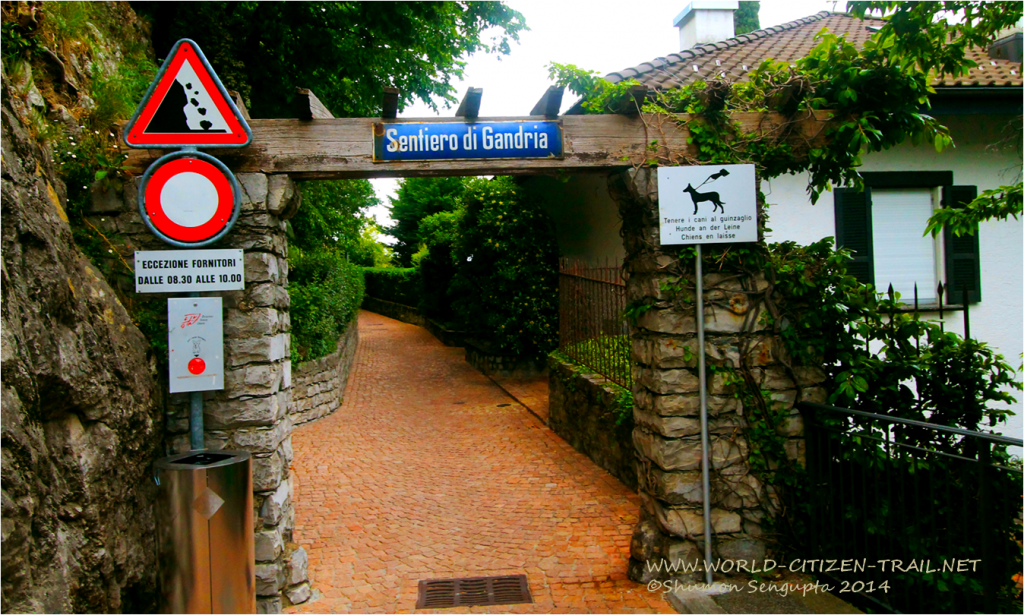
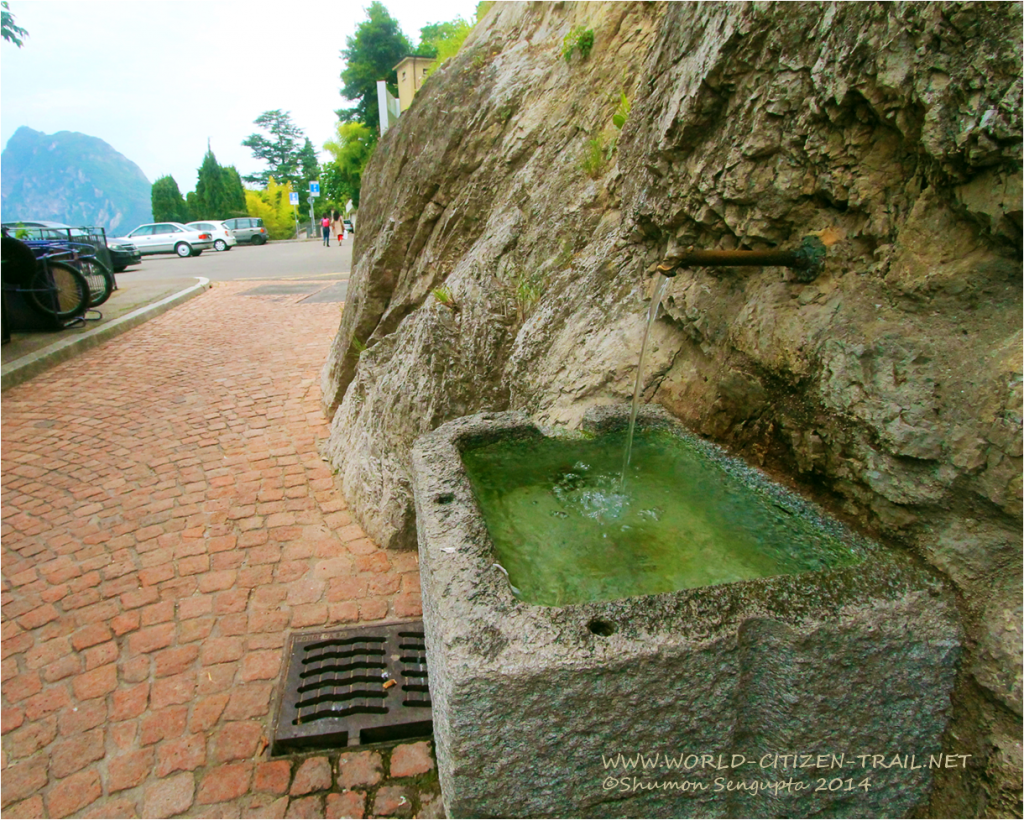
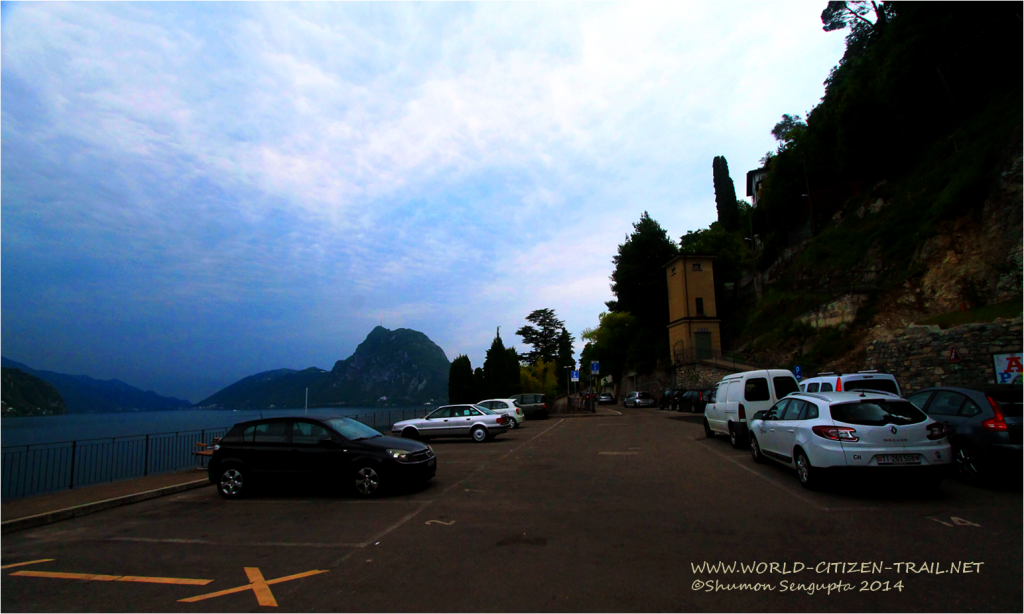
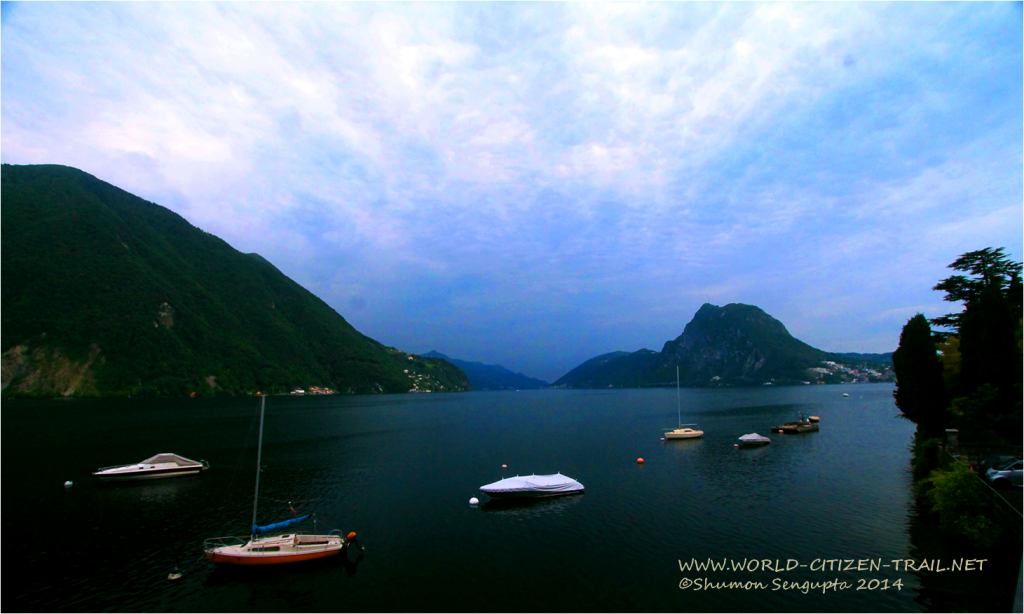
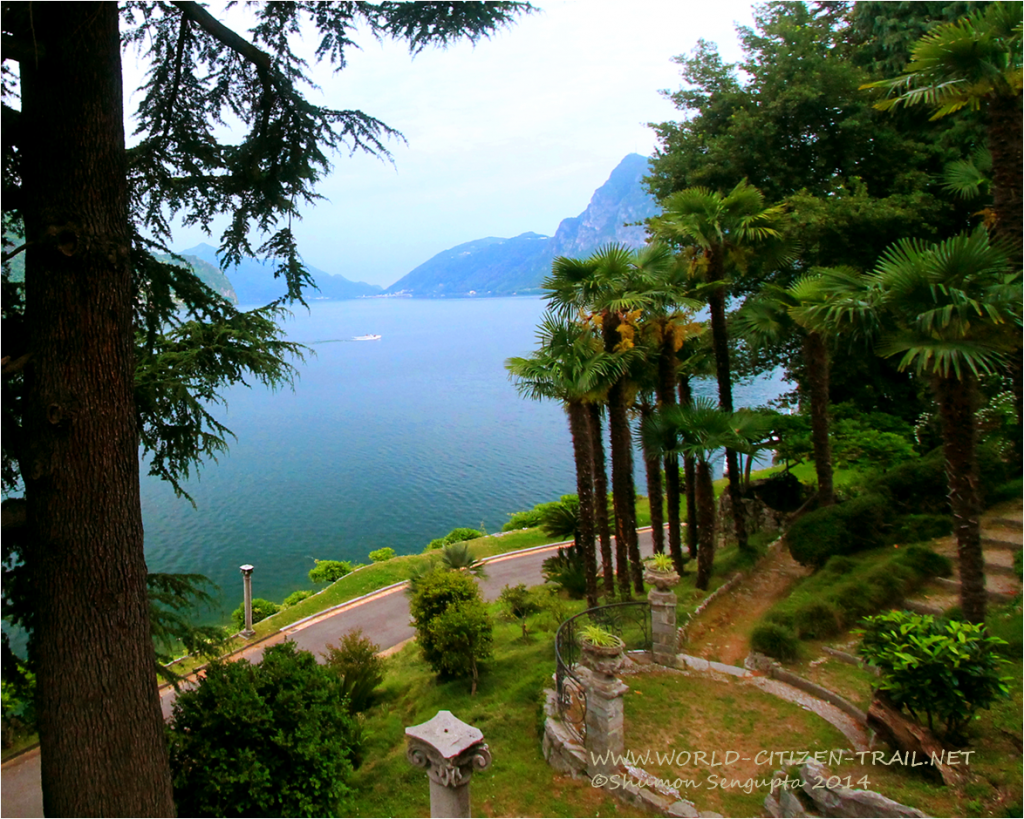
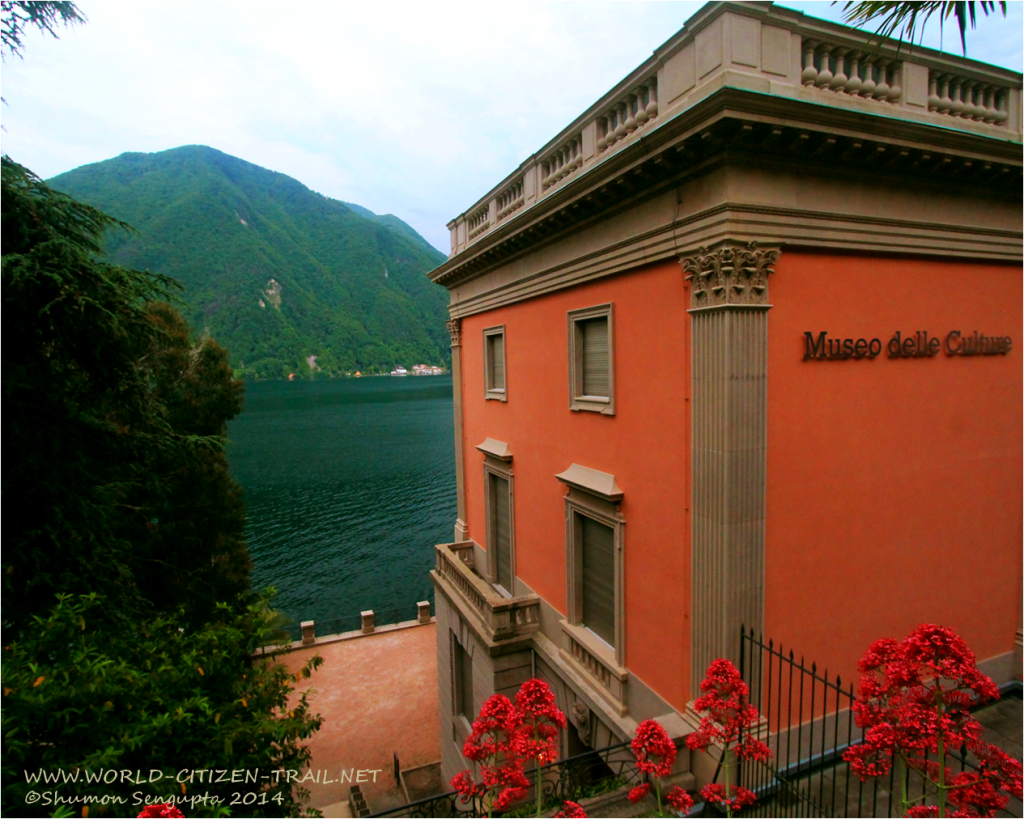 Going past the museum, we went along the road which went slightly uphill for about 15 minutes, after which we arrived at the main road in Castagnola, from where we boarded the bus for Lugano railway station. Paradiso falls in between Castagnola and Lugano Station.
Going past the museum, we went along the road which went slightly uphill for about 15 minutes, after which we arrived at the main road in Castagnola, from where we boarded the bus for Lugano railway station. Paradiso falls in between Castagnola and Lugano Station.
The Olive Trail traverses a spectacularly beautiful natural and architectural landscape along Lake Lugano. While the narrow trail ascends and descends gently in a few places over flights of stairs, curving dramatically around rock faces, overall, overall, it is an easy walk. The trail, not wider than a narrow footpath in most places, sweeps and meanders through a cobbled / graveled pathway hewn on the steep mountain side. It winds itself along little hamlets, passing underneath arcades of charming old houses, front or back yard gardens, little hotels and restaurants and through private terraces.
At various points you get to see some stunning vistas of the lake and even see Mount San Salvatore and Italy on the other side of the lake. There are benches at different points along the track, and we sat down on some of these and admired different views and perspectives of the mountains. Some of these are ideal spots for a picnic.
During the course of our walk, we encountered very few people, other than few fitness buffs running / jogging along the trail. That aside, we had the trail, between Gandria and Cortivo almost entirely to ourselves – the sense of solitude was profound and beautiful.
Although named as the Olive Trail, we did not encounter as many olive trees we initially thought we would. But that really did not matter. We got to learn something about the olive tree and every moment spent on this trail was worth it.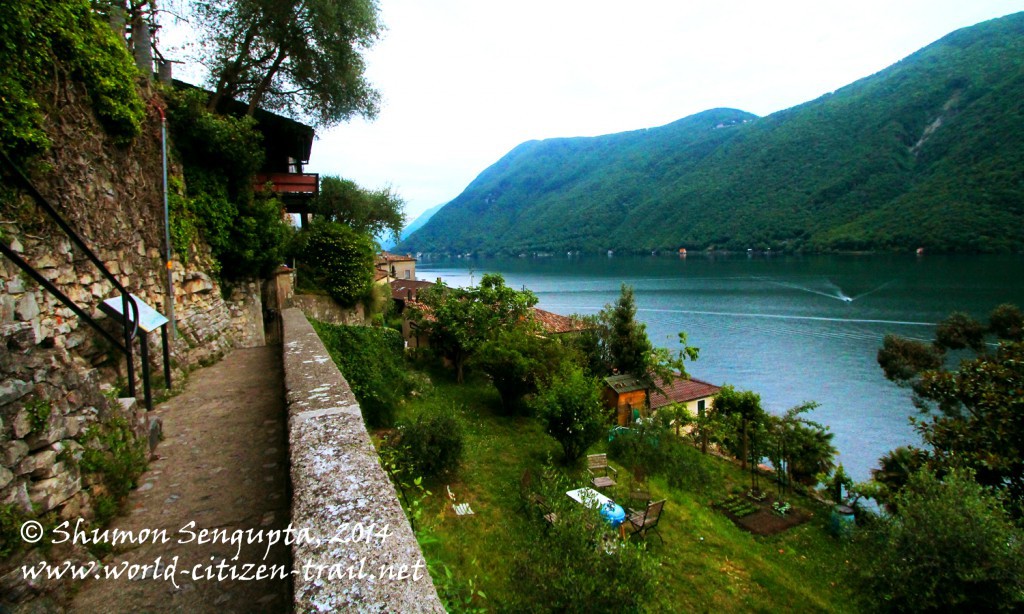
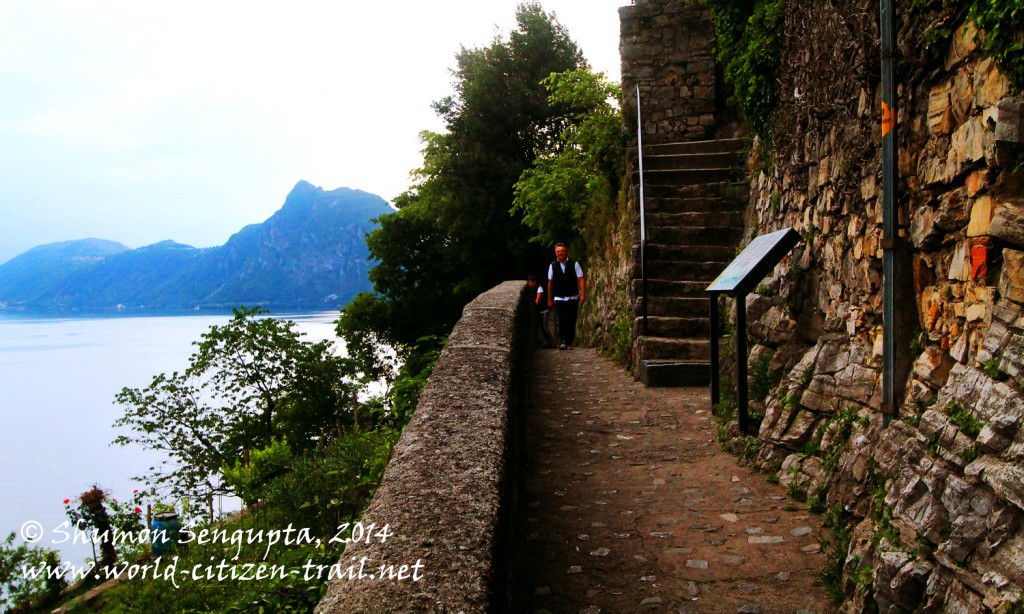
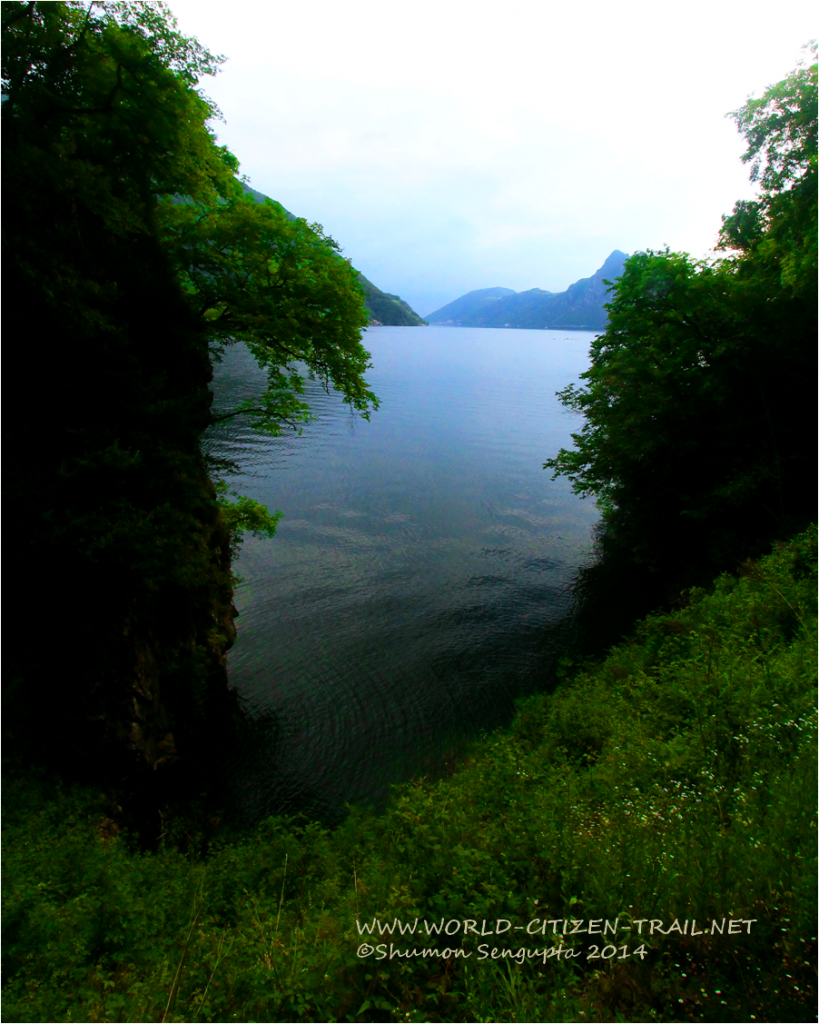
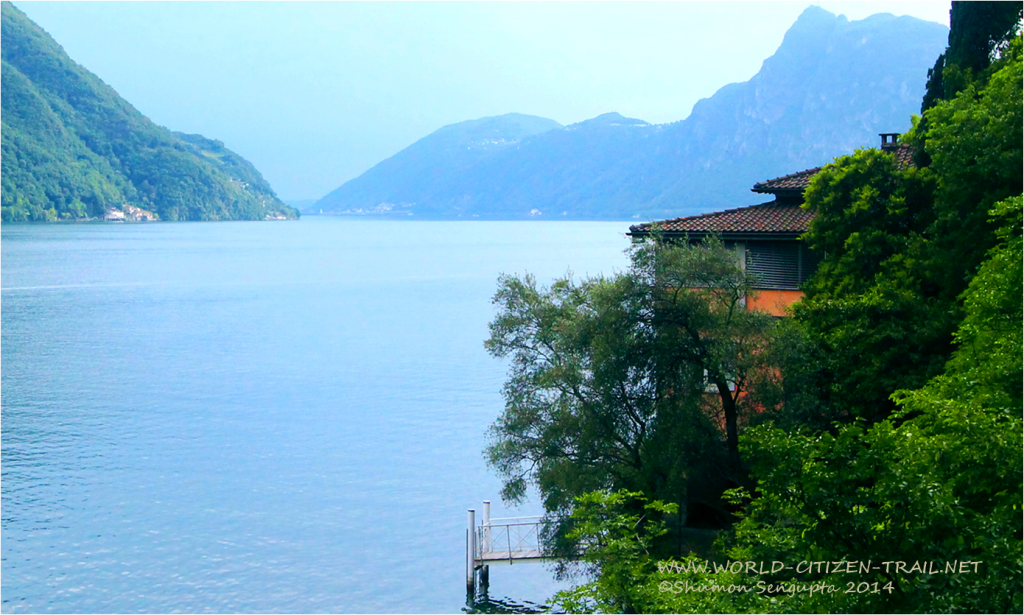
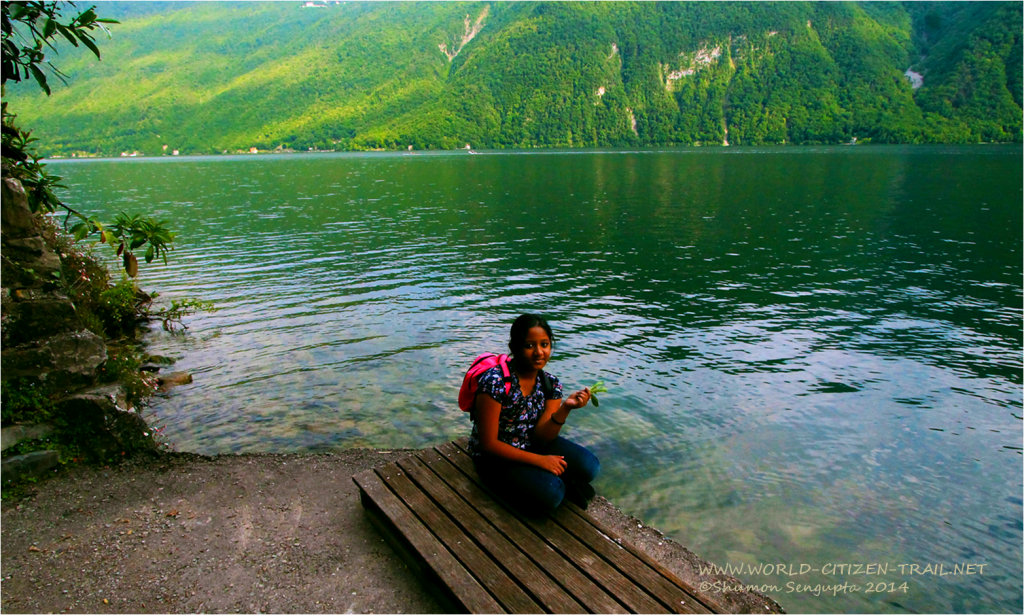
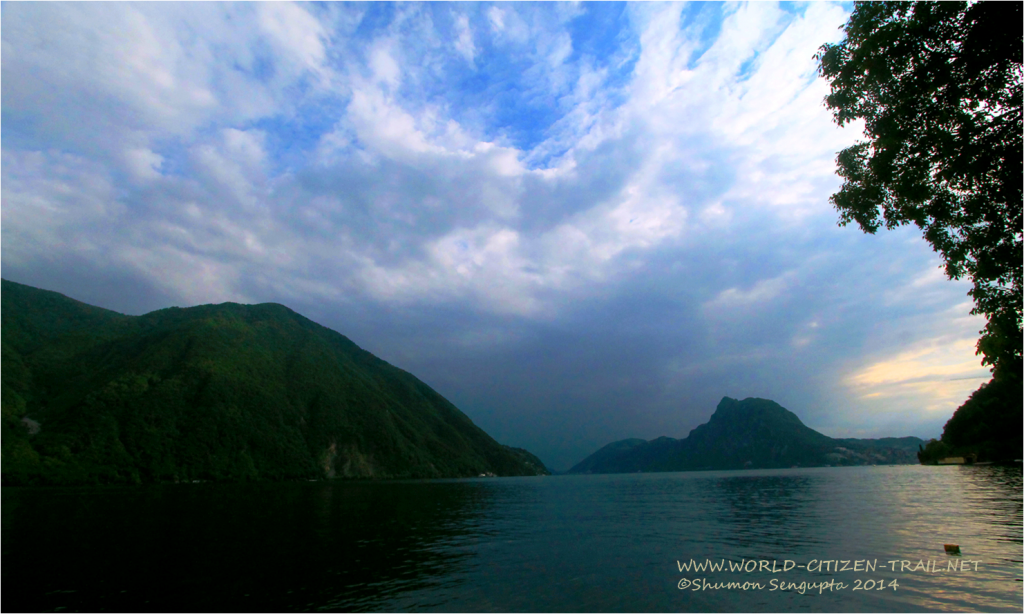
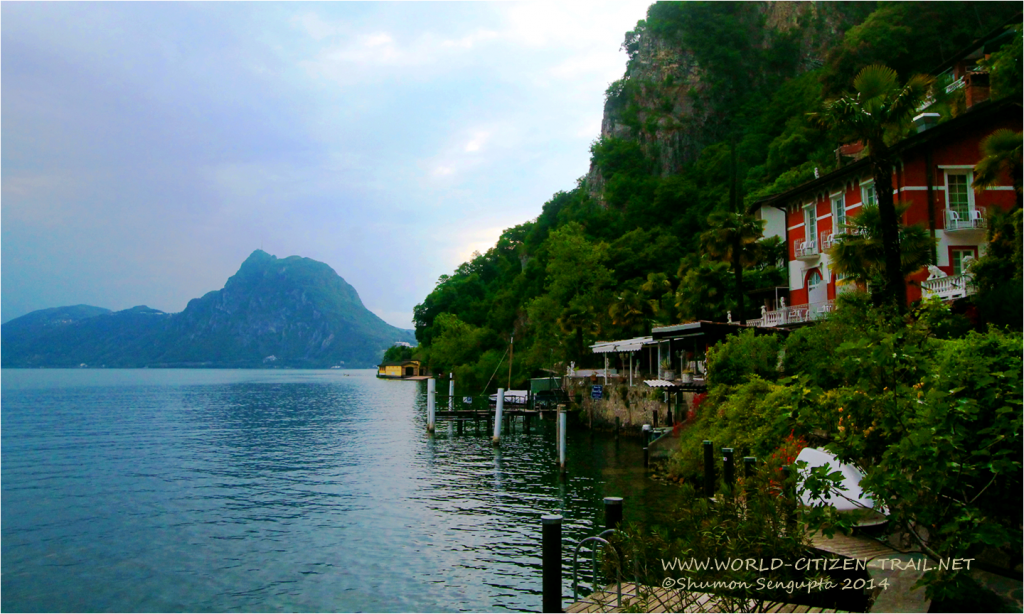
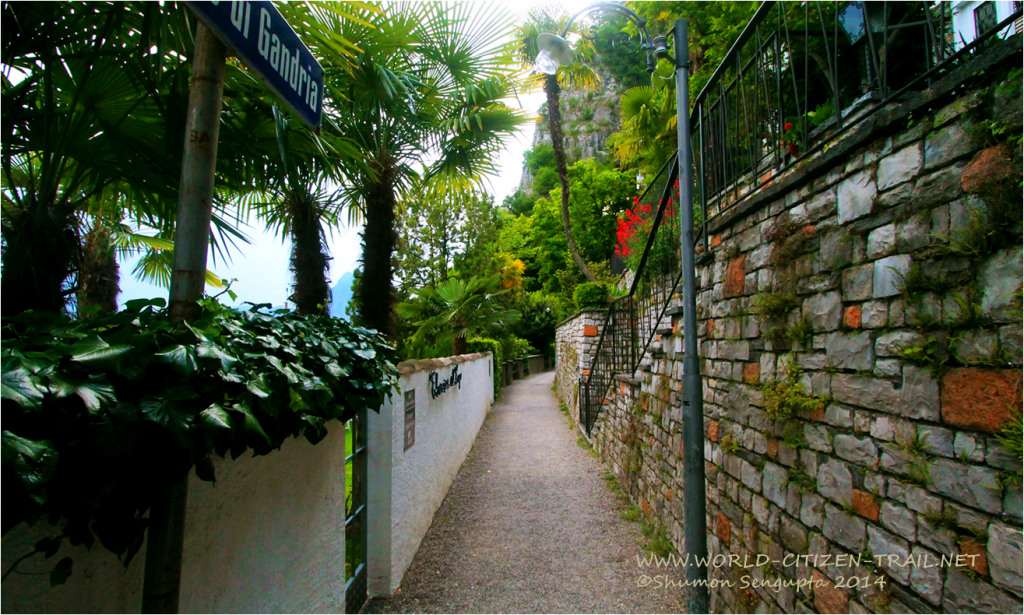
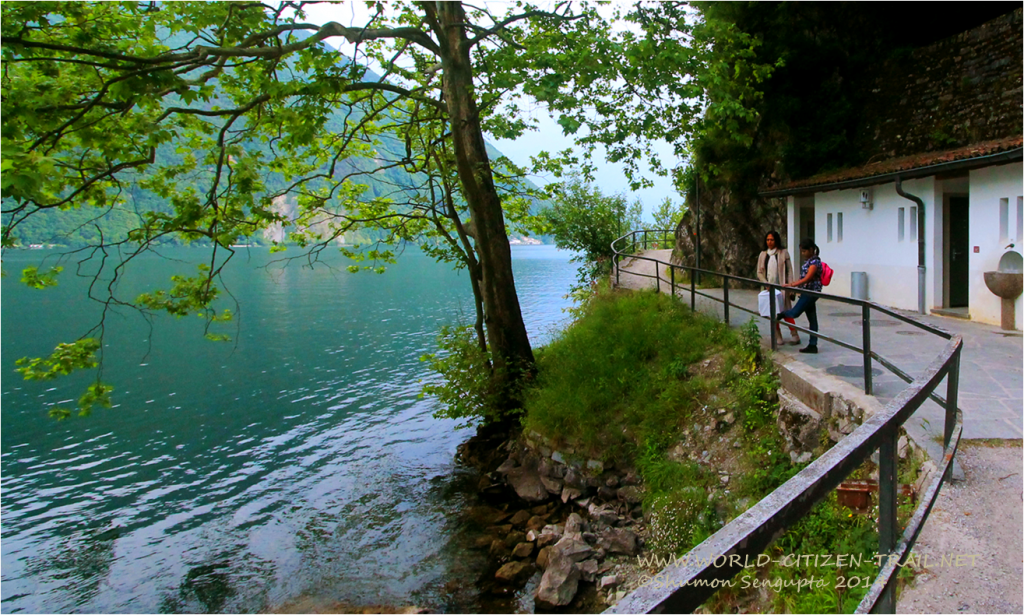
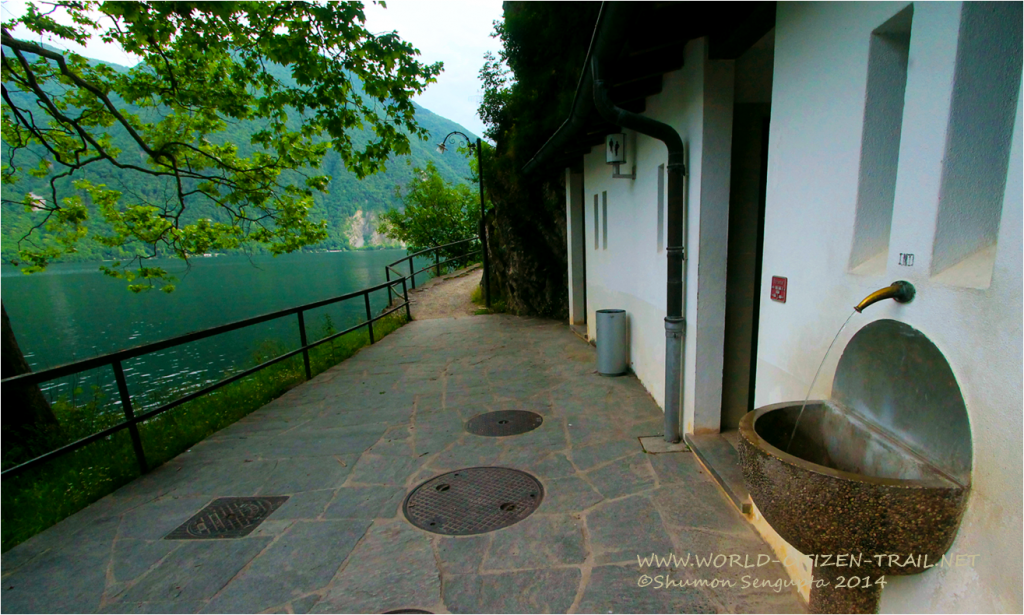
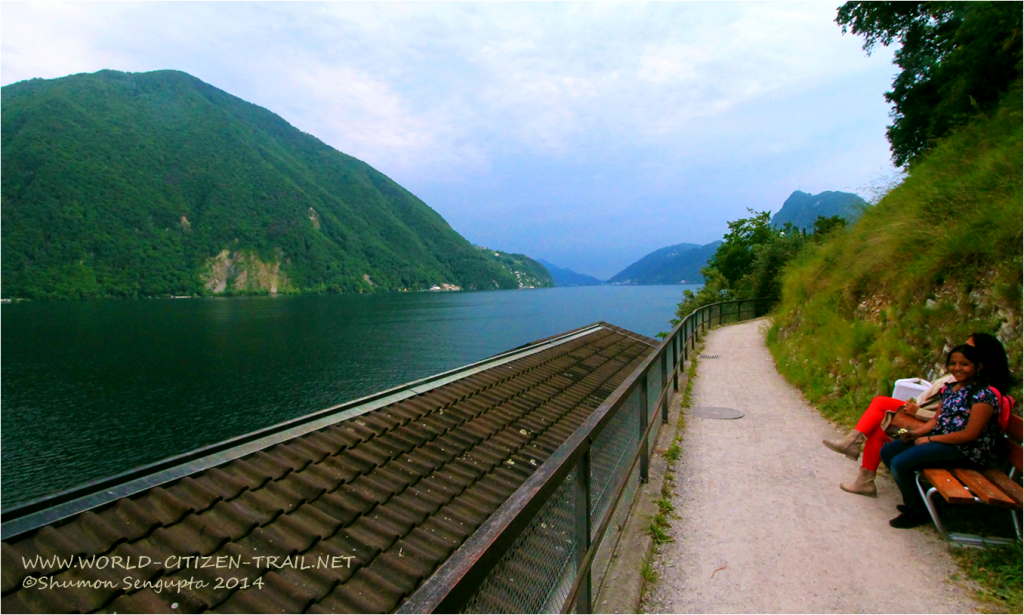
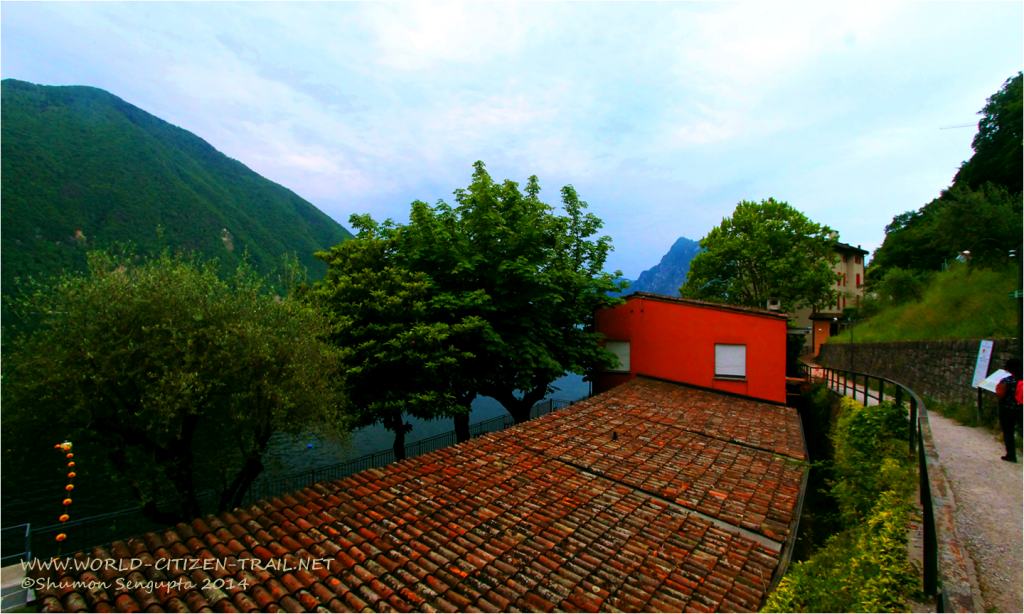
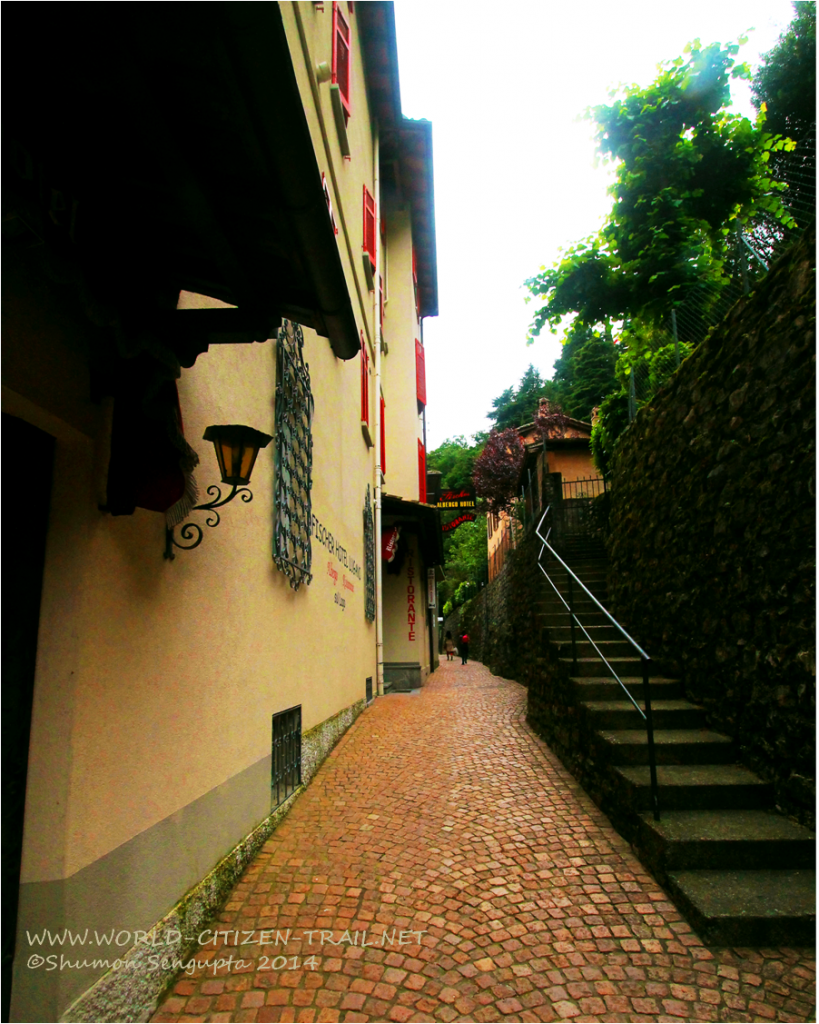
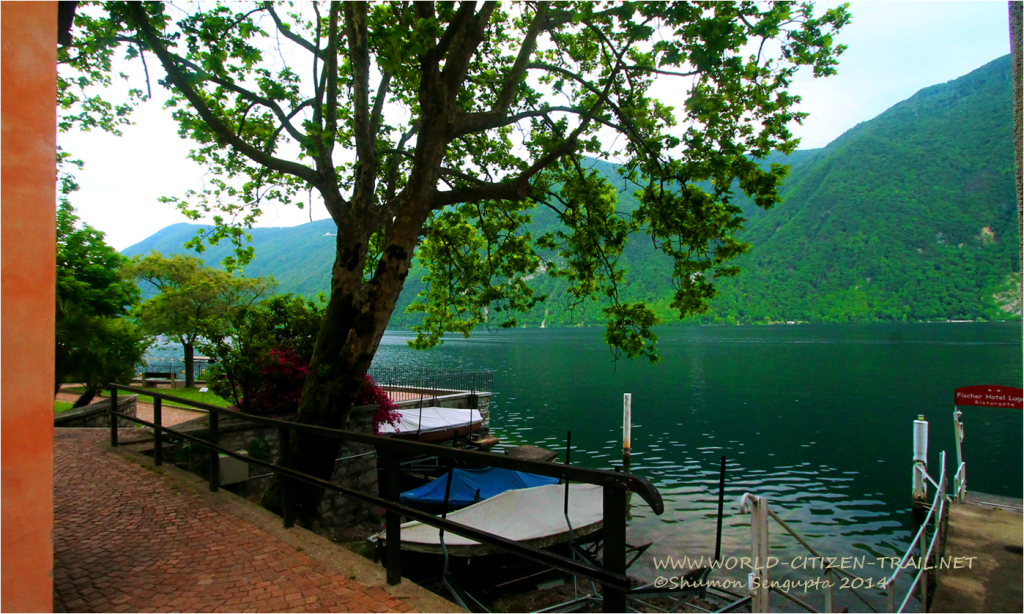
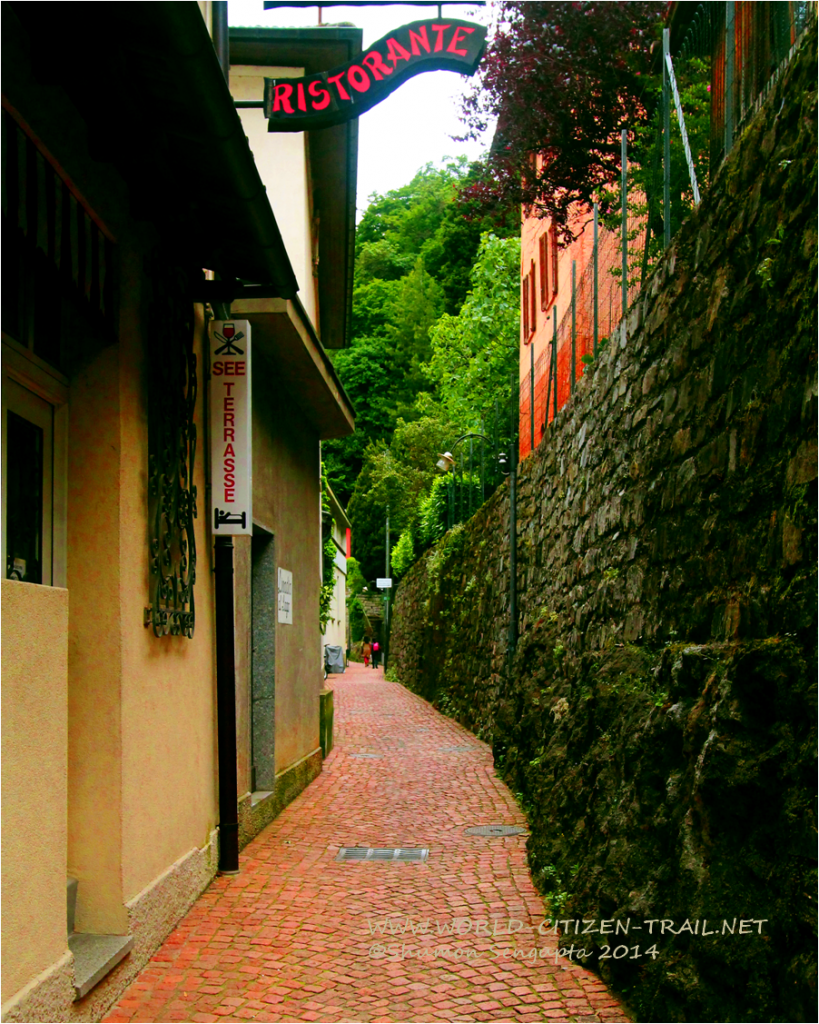
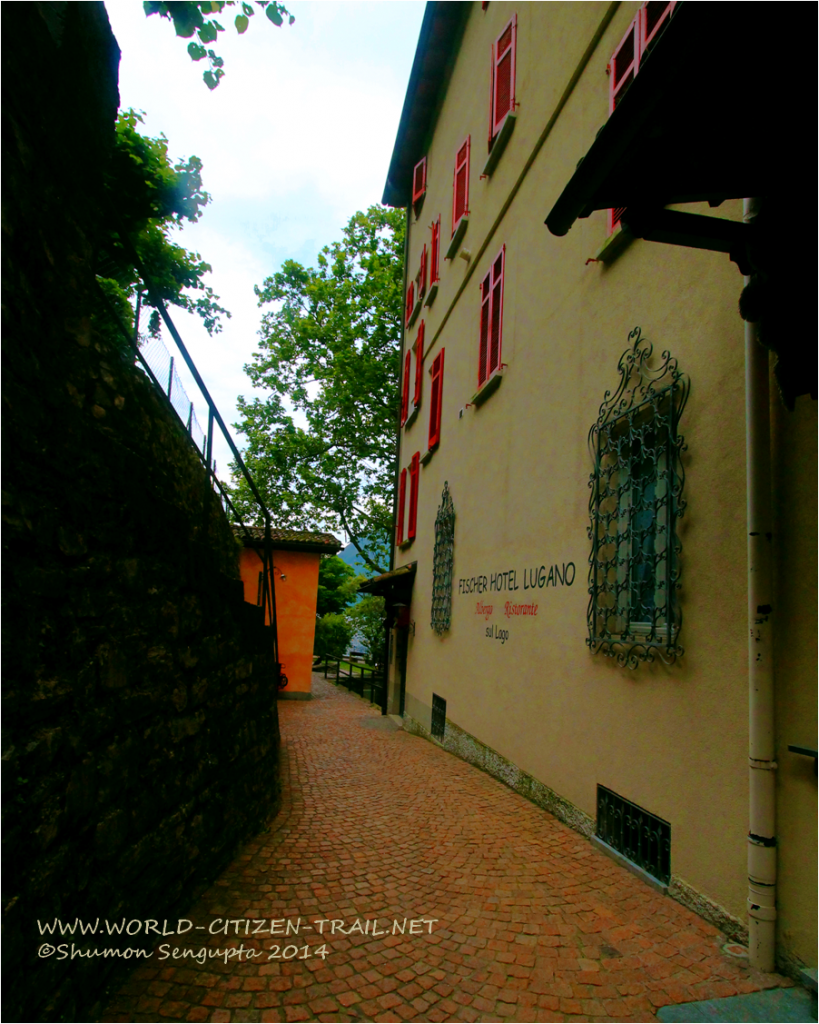
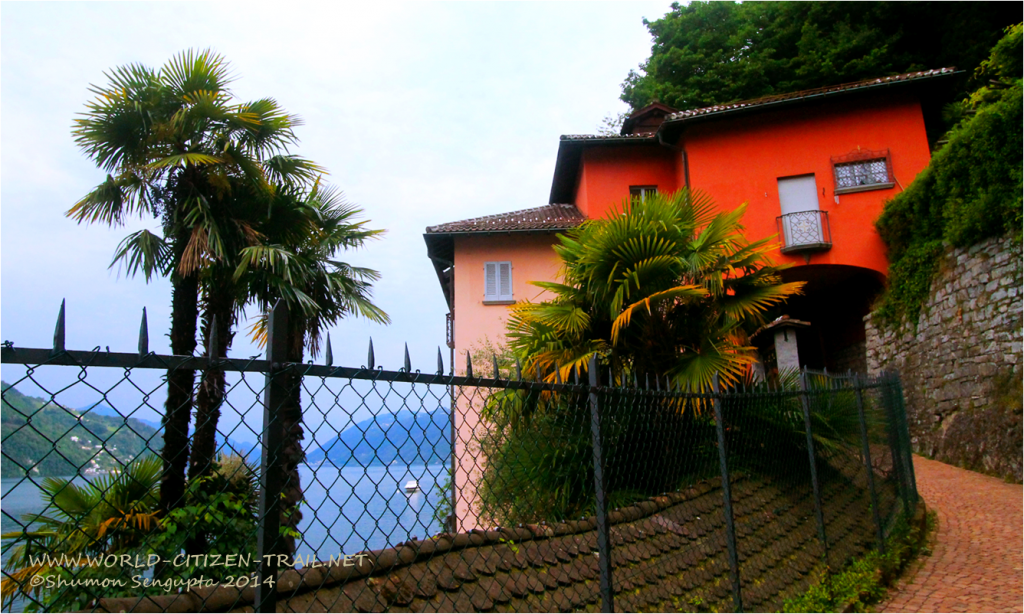
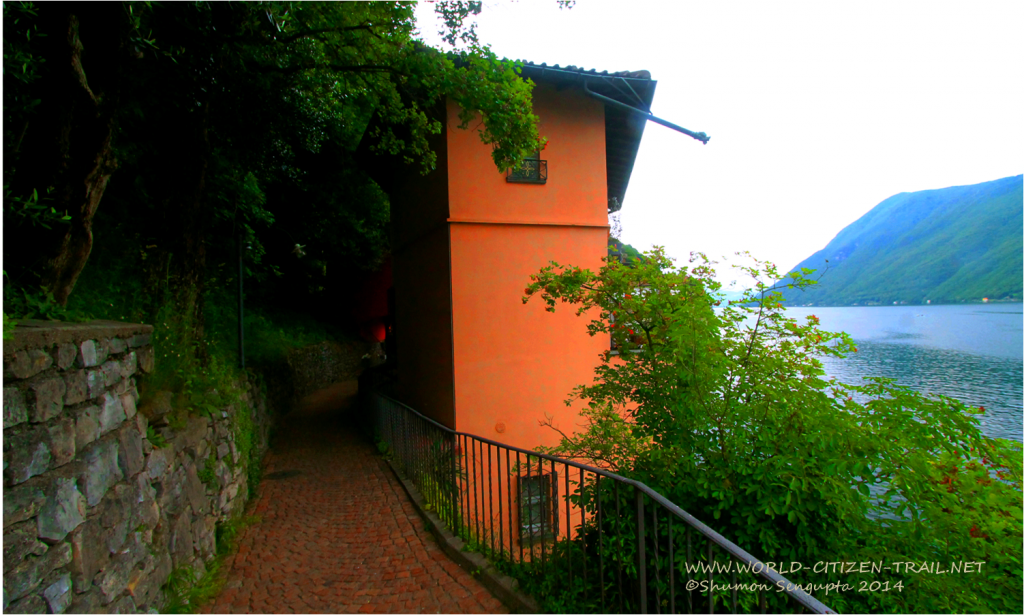
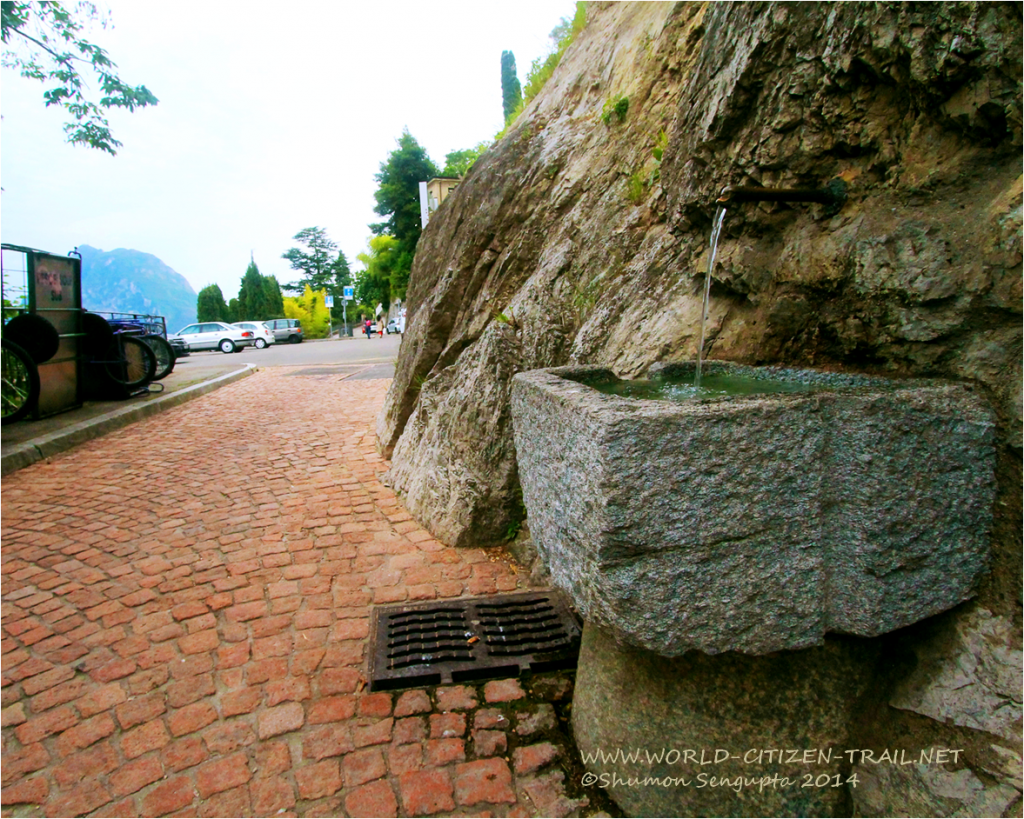
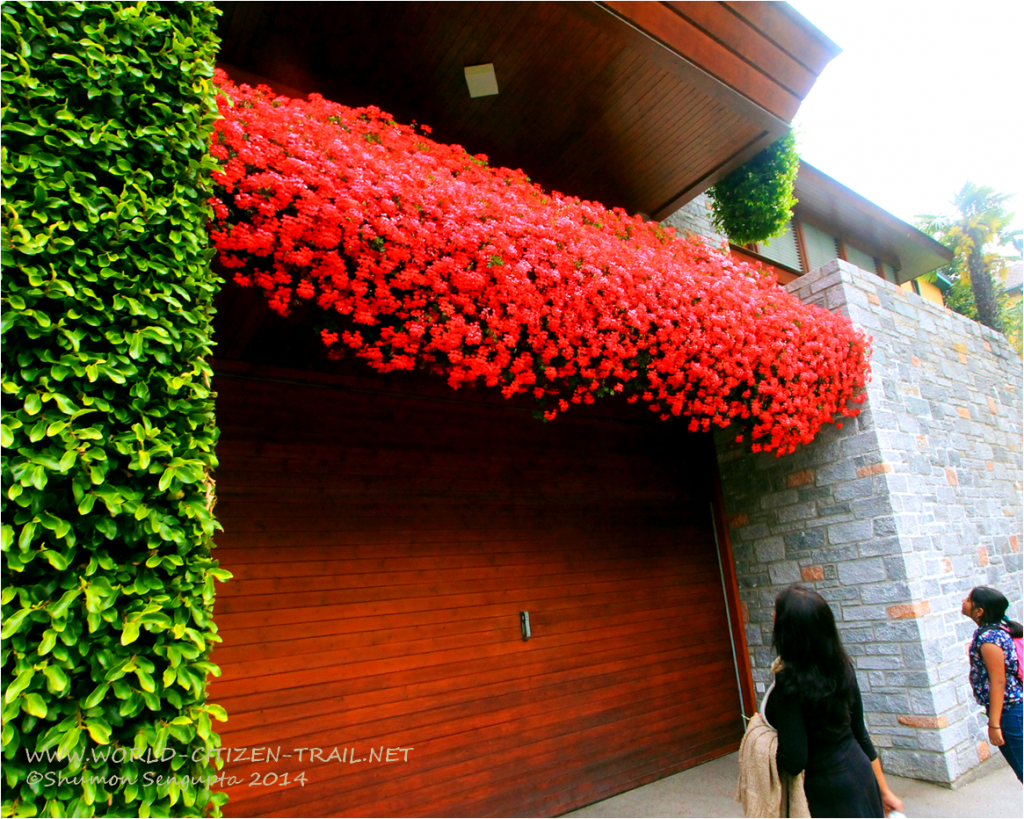
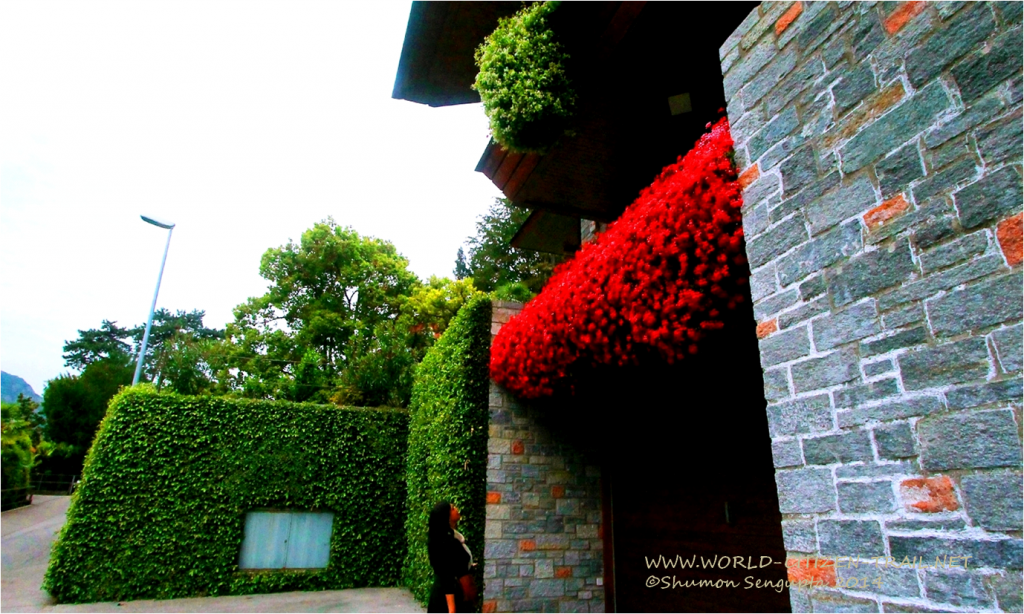
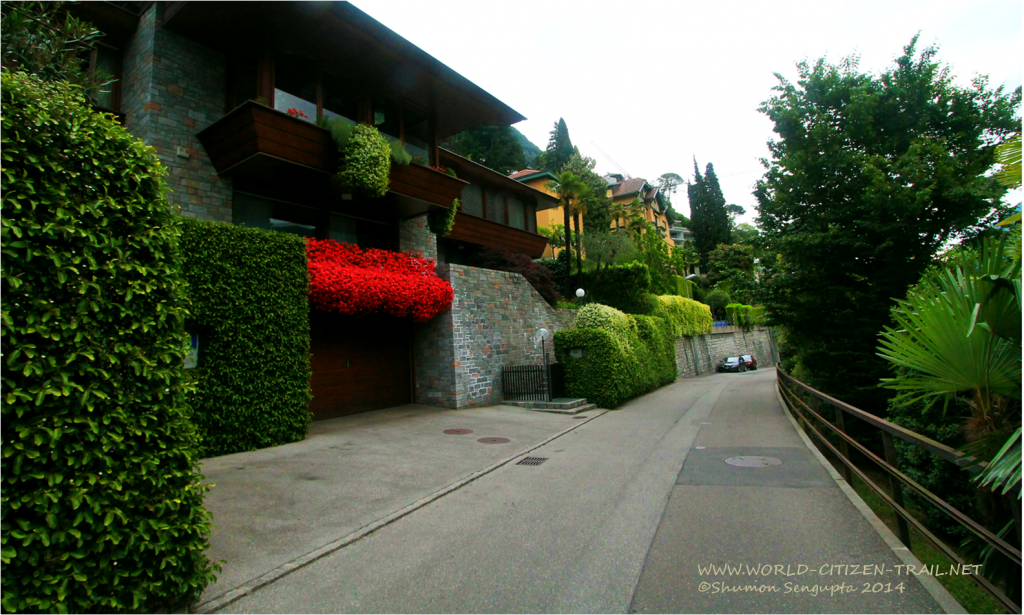
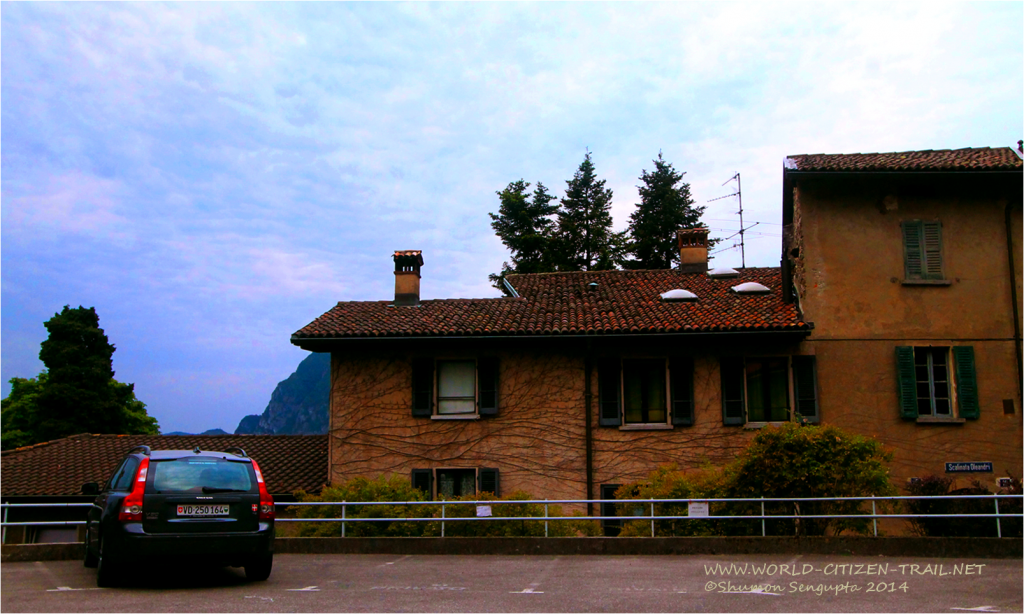
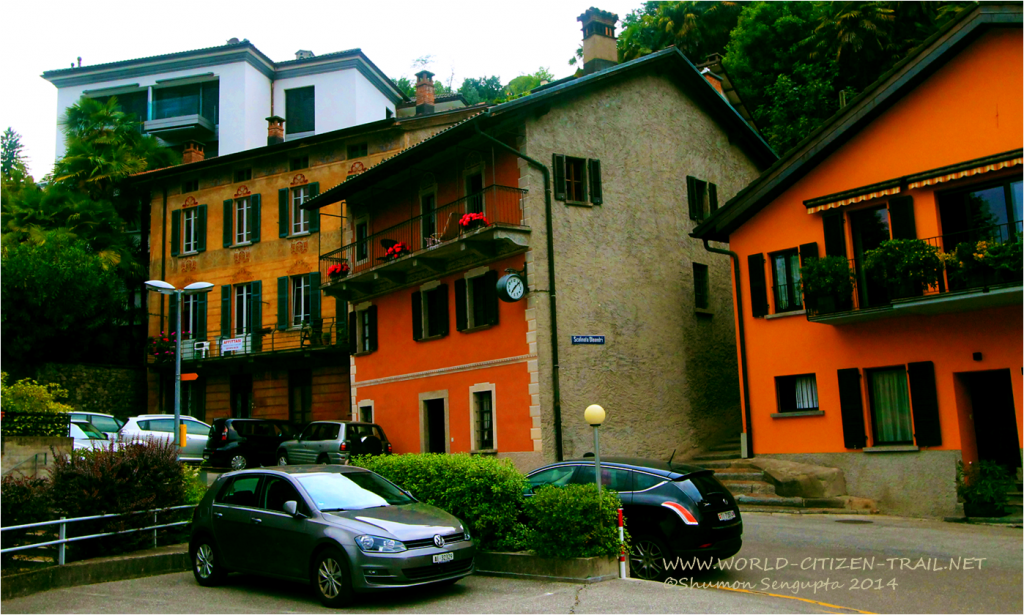
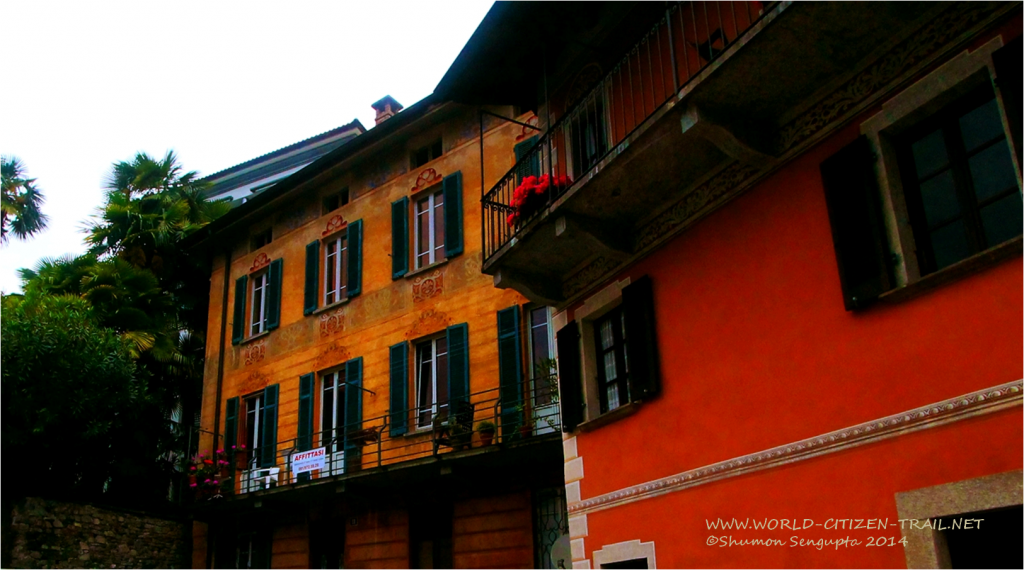
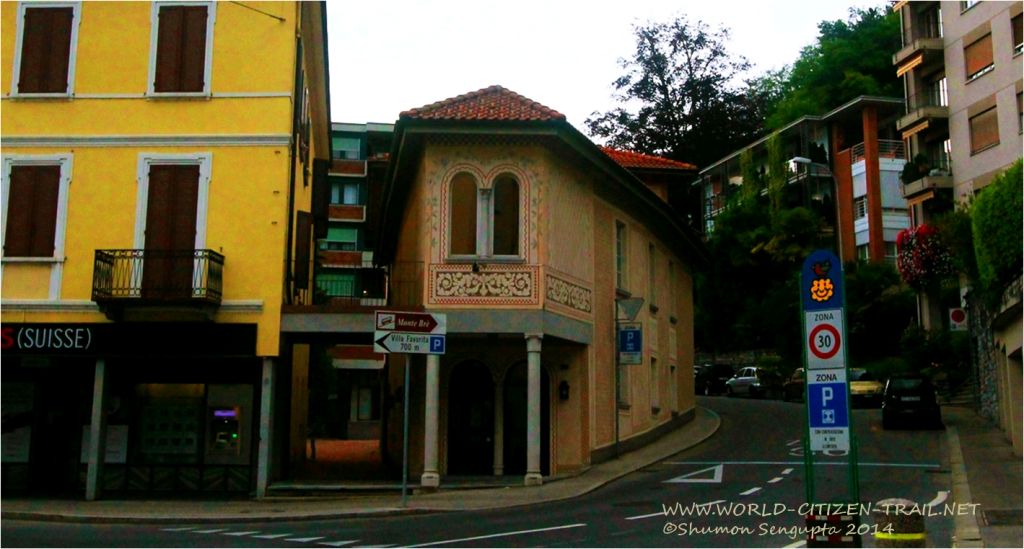
Travelling tips:
- For how to reach Gandria, check my post on Gandria. Gandria is the picture postcard quaint little lakeside village at the foot of Monte Brè. Clinging on to the steep mountainside, it is a labyrinth of narrow cobble stone alleys, ramps, stairwells and grottos, with dense clusters of incredibly charming Italian style houses, presenting surprises round every corner.
-
If you have a full day, there is a longer trail that starts from the summit Mount Brè (which you can reach by a Funicular from Cassarate). From the summit you first walk down to the village of Brè (mentioned in a different post) and from there, following a well marked track along the southern slope of Mount Brè you descend to Gandria (mentioned in another post). You can have a relaxed lunch at Gandria and then take the Olive Trail to Lugano via Castagnola.
-
As per the official website of Lugano, among the naturalistic highlights of Gandria are two famous rocks: the so-called Gandria Rock, located along the path between San Domenico and the village – it’s one of the favourite subjects of artists and painters – and the Predescia Rock, an erratic gneiss boulder.
-
Apply a good sun screen because certain sections are pretty sunny. Carry a bottle of water which you can refill at the drinking water fountains along the way. And wear good hiking boots or walking shoes appropriate for mountains.
-
Along the trail there is a restroom which is very clean – of course this is Switzerland, and free for use – is it really Switzerland? And there is a little drinking water fountain in the middle of the restroom. It is a place to have some cold fresh spring water and refill your water bottles. Apart from this there are hotels and restaurants all along the trail.
-
In Cortivo, there is a Lido (public outdoor swimming area with facilities) called Lido San Domenico. This is a nice place to have a swim in the lake or relax or both. There is also a secluded access to the lake, where you can go and have a swim in the lake in total tranquility, although it is not a formal Lido. It is ideal for a picnic.
-
According to the official web site of Lugano, about 200 meters from the Museum of Culture Villa Heleneum), there is an olive park and if you have time, it is worth a visit. It is a terraced nature park facing south and is covered with a richly flowering meadow. The entrance is in front of the Albergo Fischer, and is indicated by several names: ‘Parco degli Olivi’, ‘Sentiero dei Fiori’,and Sentiero dell’Olivo’. Most of the trees and shrubs come from the Mediterranean area: olive trees, green cypresses, bay trees, myrtle, pomegranate, Mayaca palm, marine pines, and flowered laurels. At ground level a marvelous spread of wild herbs – oregano, thyme, sage, as well as daisies, carnations, evergreens, daffodils and wild tulips. This spectacular floral display is repeated each year in Spring in the months of May and Jun
